The first planned stop for the day was Seljalandsfoss. It was fun to scramble over the rocks and we only got a little wet.
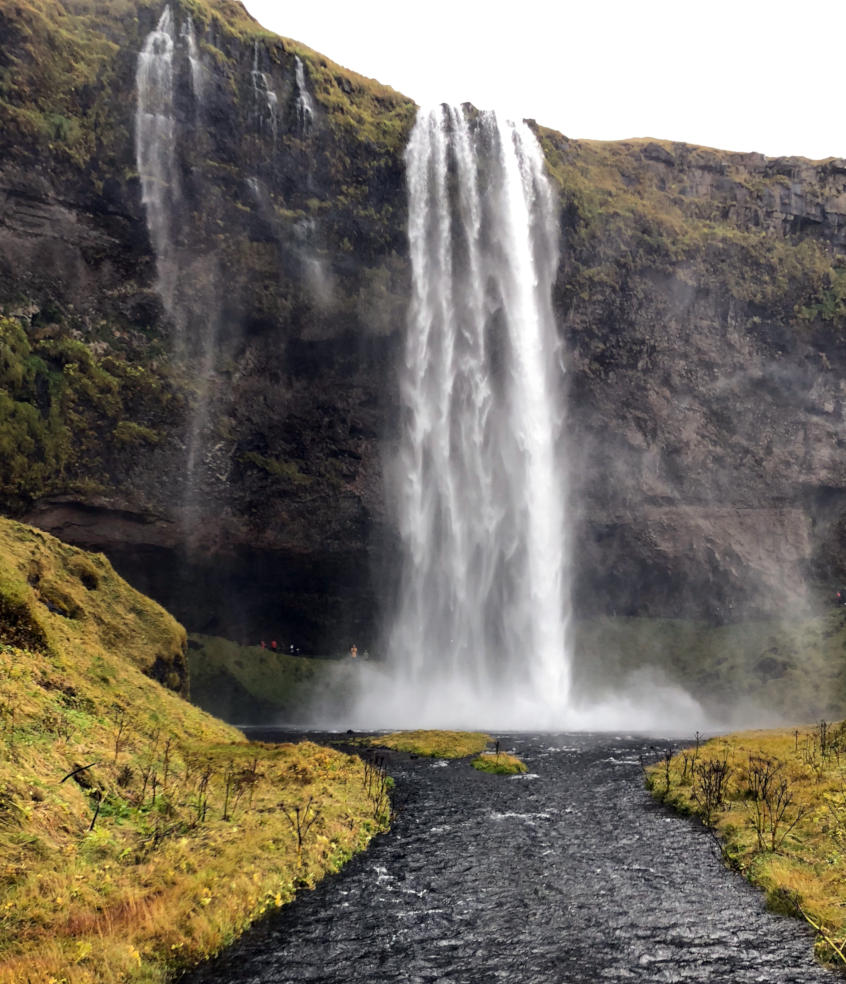
It was annoying to get a shot of these steps without some soggy tourist ass in the way, but here’s me doing my best. They were surprisingly grippy, given they were worn smooth and not flat in the slightest.
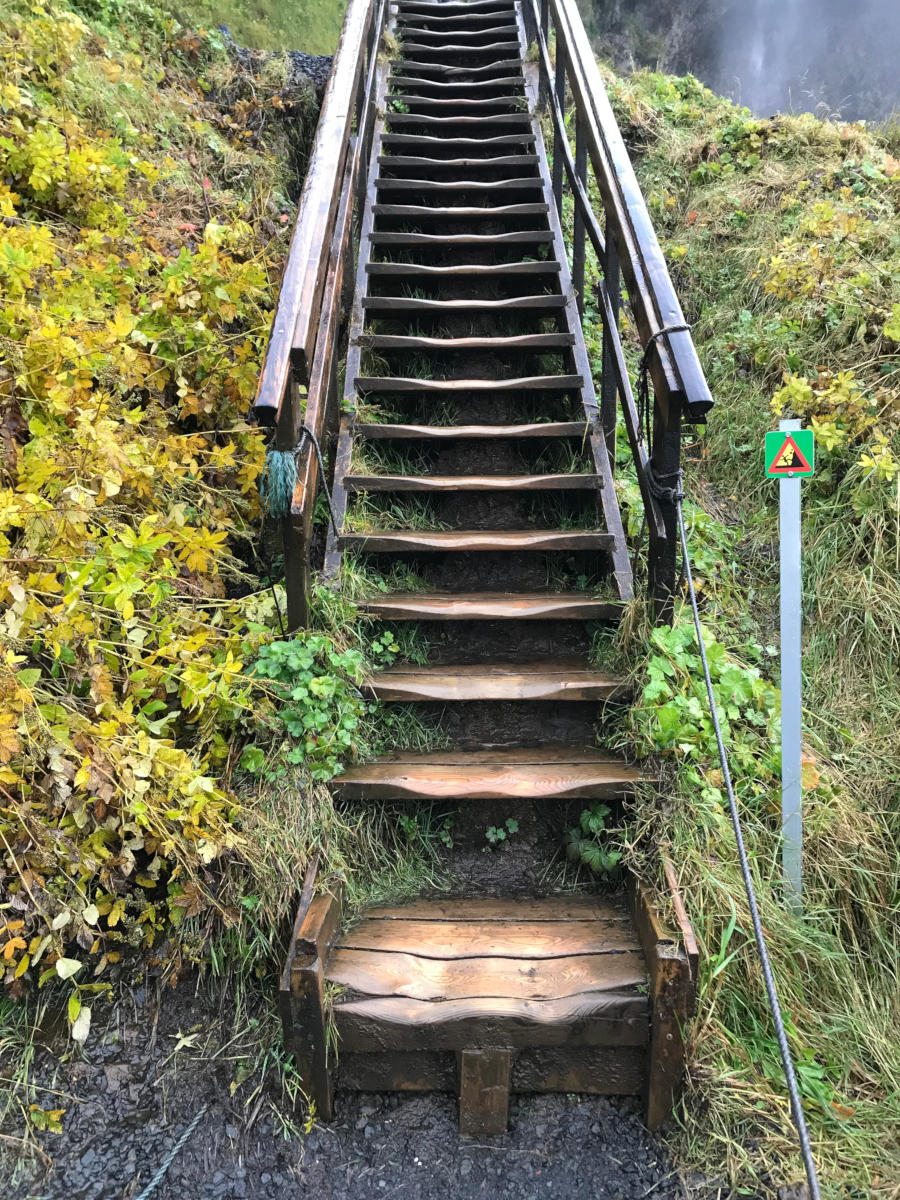
Standing behind the falls was truly spectacular. The amount of water coming over them even at this time of year when there’s no snow melt is incredible, and it was impossibly fresh tasting out of the air.
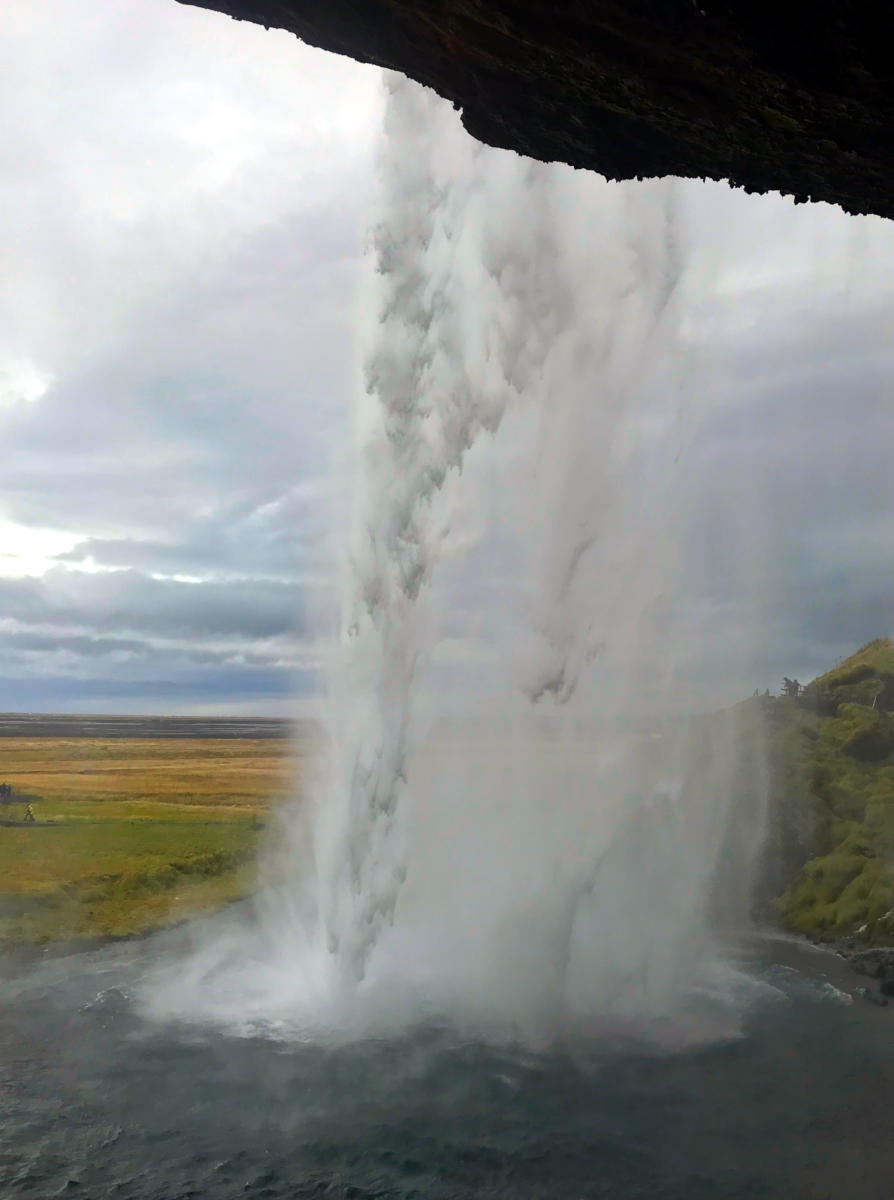
Along the way to our second stop we happened upon [Drangurinn í Drangshlíð 2](https://www.google.com.au/maps/place/Drangurinn+%C3%ADAlong the way to our first stop we happened upon +Drangshl%C3%AD%C3%B0+2/@63.5247809,-19.5561361,503m/data=!3m1!1e3!4m13!1m7!3m6!1s0x48d73c7d8975d4d1:0x135bd0abdc032e96!2zRHJhbmdzaGzDrcOwIDIsIEljZWxhbmQ!3b1!8m2!3d63.5247809!4d-19.5539474!3m4!1s0x48d73c7d82ff72bb:0x82c1a1d2ef64e18b!8m2!3d63.5241208!4d-19.5546985?hl=en), some ruins under the side of one of iceland’s truly massive lumps of rock that just hang around the place.
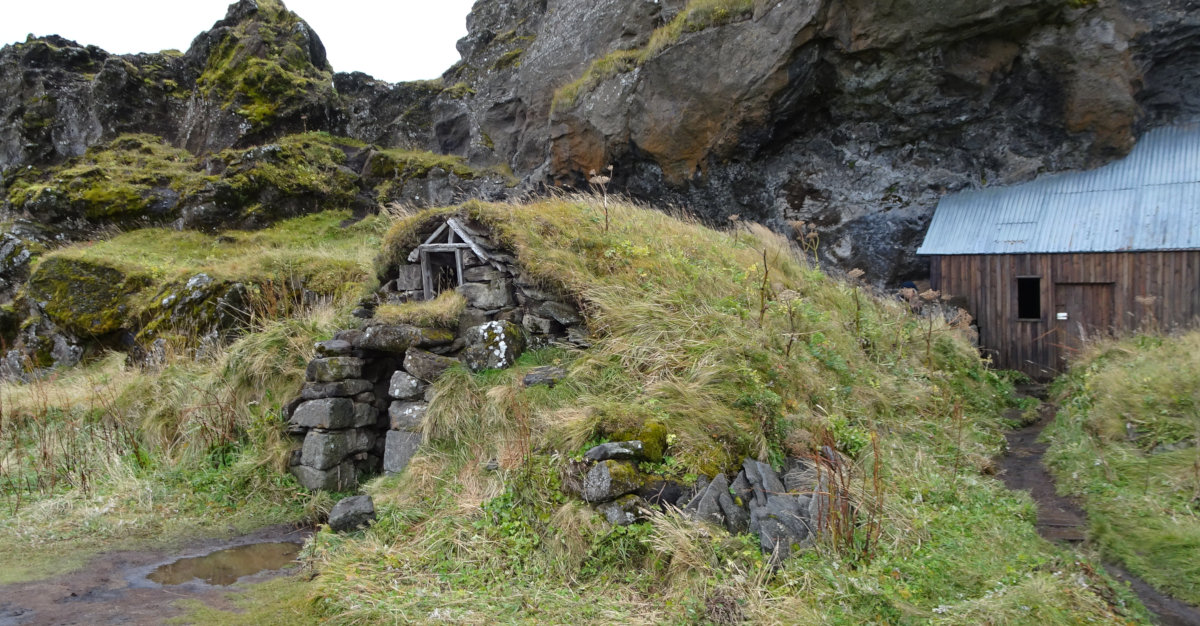
You really have to appreciate the costs involved in conservation sometimes - and what has to be done in the name of keeping those costs down. Throughout Iceland we saw this and again in Northern Poland when we went to the Wolf’s Lair - wood shoved into places that might fall down - just so it doesn’t as soon as it might. This particular example’s probably 30 meters off the ground and the pieces were bigger than I am - but they’re just driftwood and it’s just jammed in there in the hope the rocks will keep from falling apart and onto people. :)
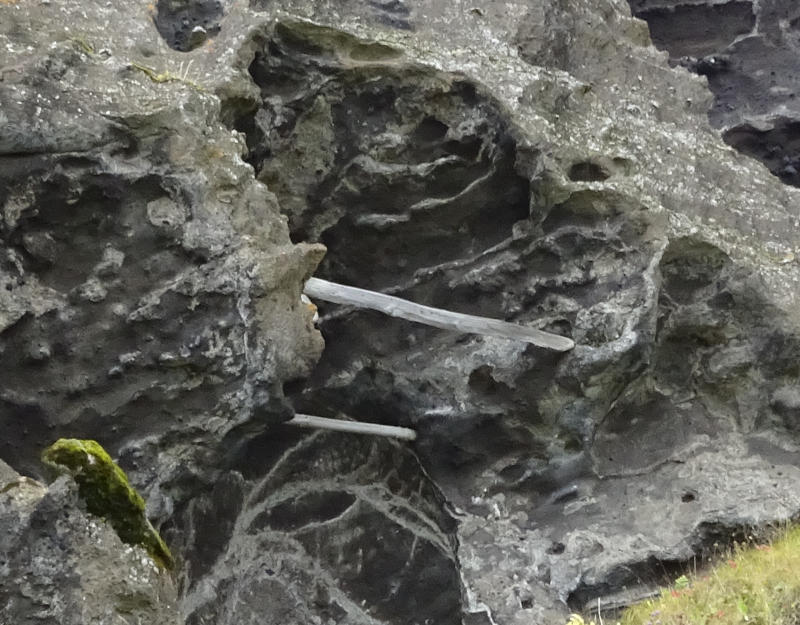
This was one of our first opportunities to see the Sheep Who Stand on Sheer Hillsides. Those little tiny white specks aren’t dust on my lens - they’re sheep standing on incredibly steep hillsides. Sometimes they sleep, though I wonder how often you see one waking up half way through rolling down one of the grassy death-slopes! :)
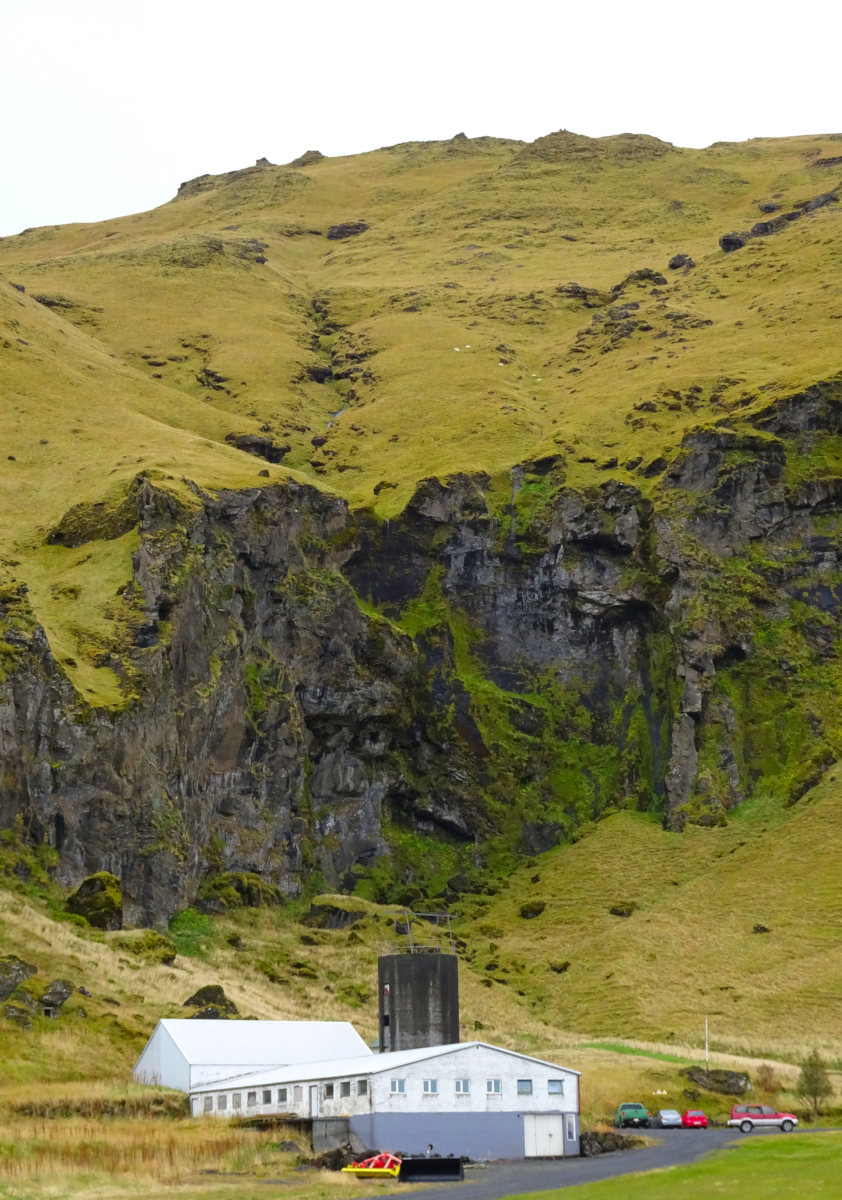
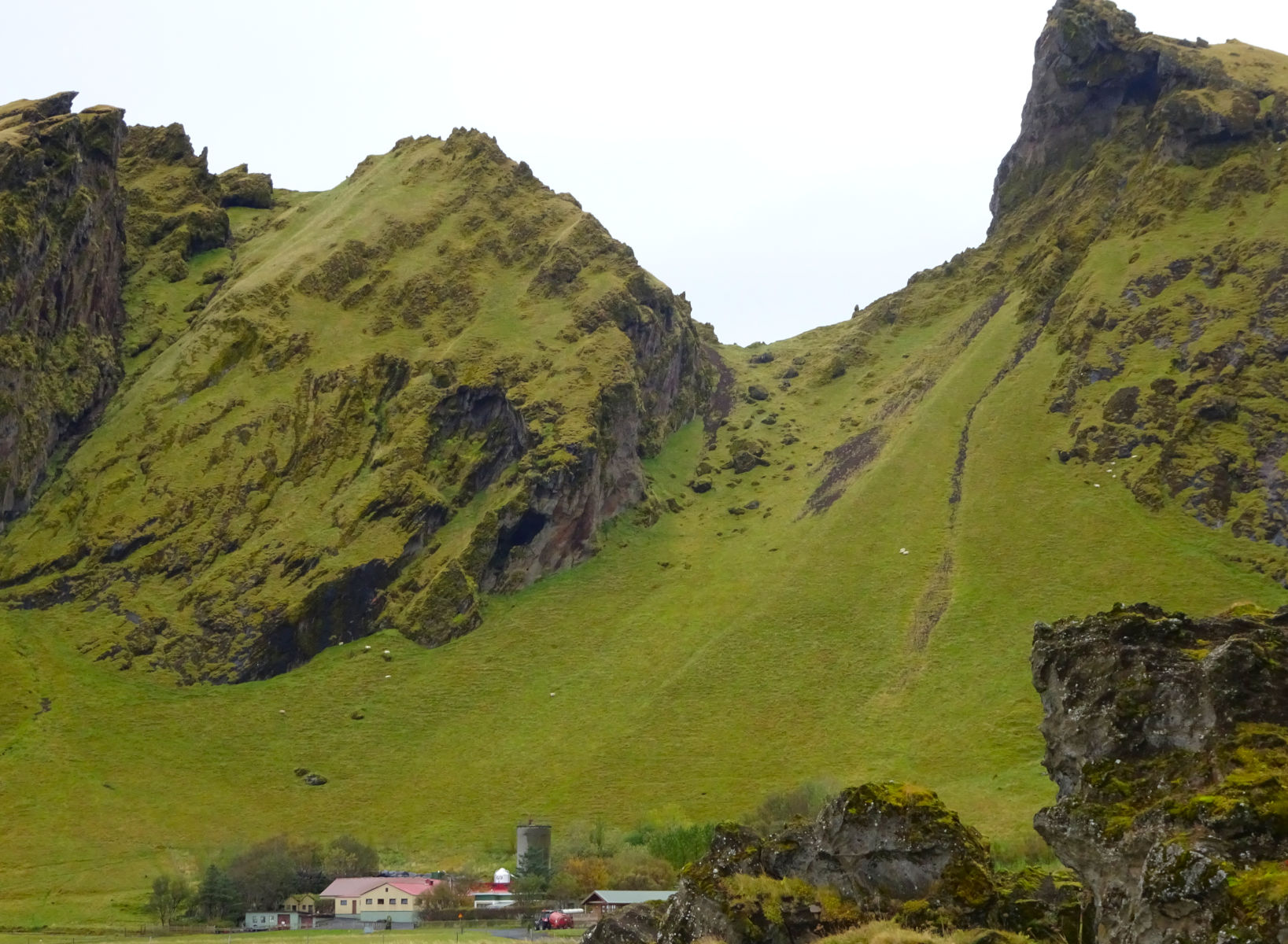
Skógafoss was a nice walk from the carpark and a lovely view.
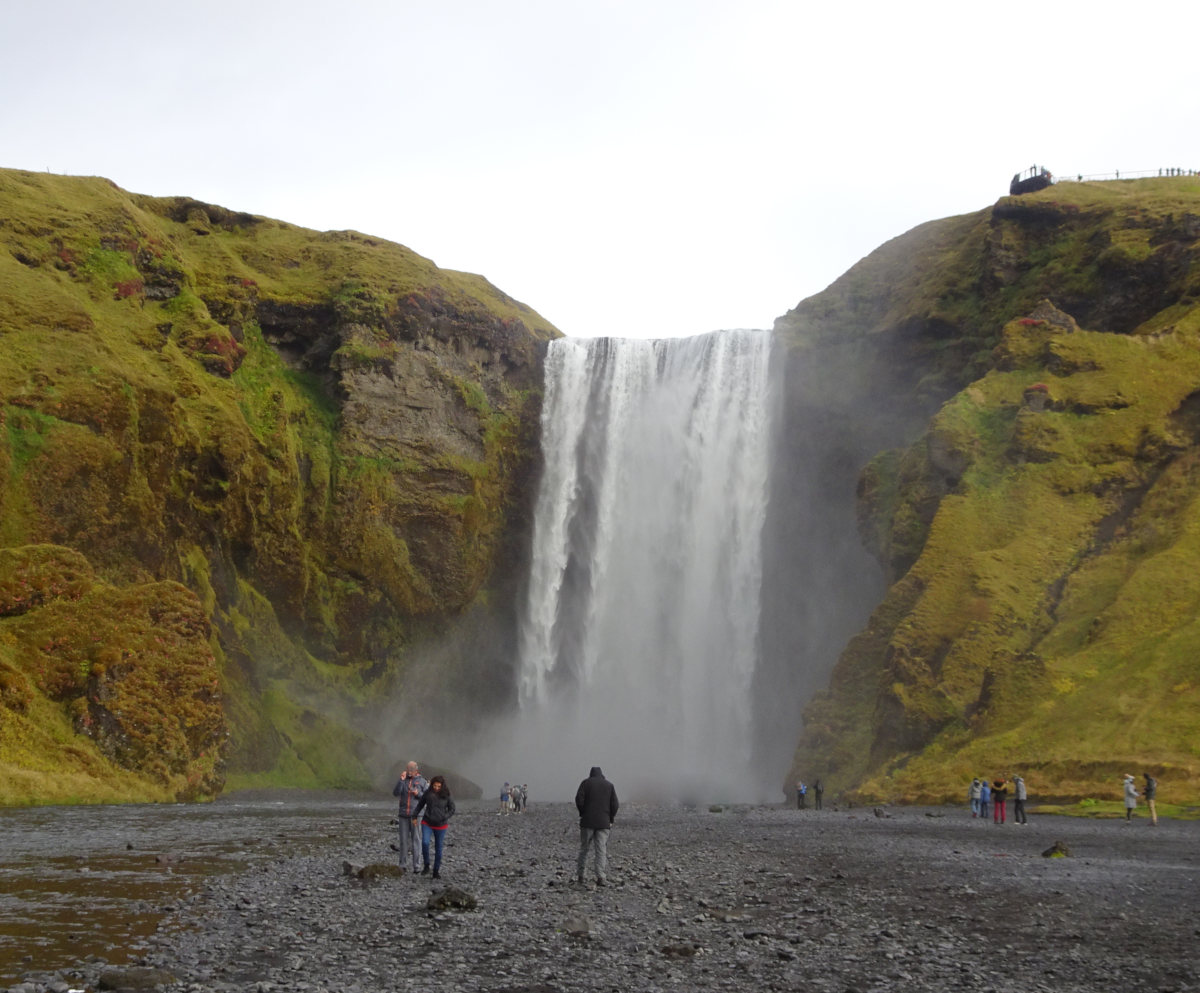
I love that just about wherever you stand in Iceland you can find truly incredible vistas. This one’s straight out of fantasy.
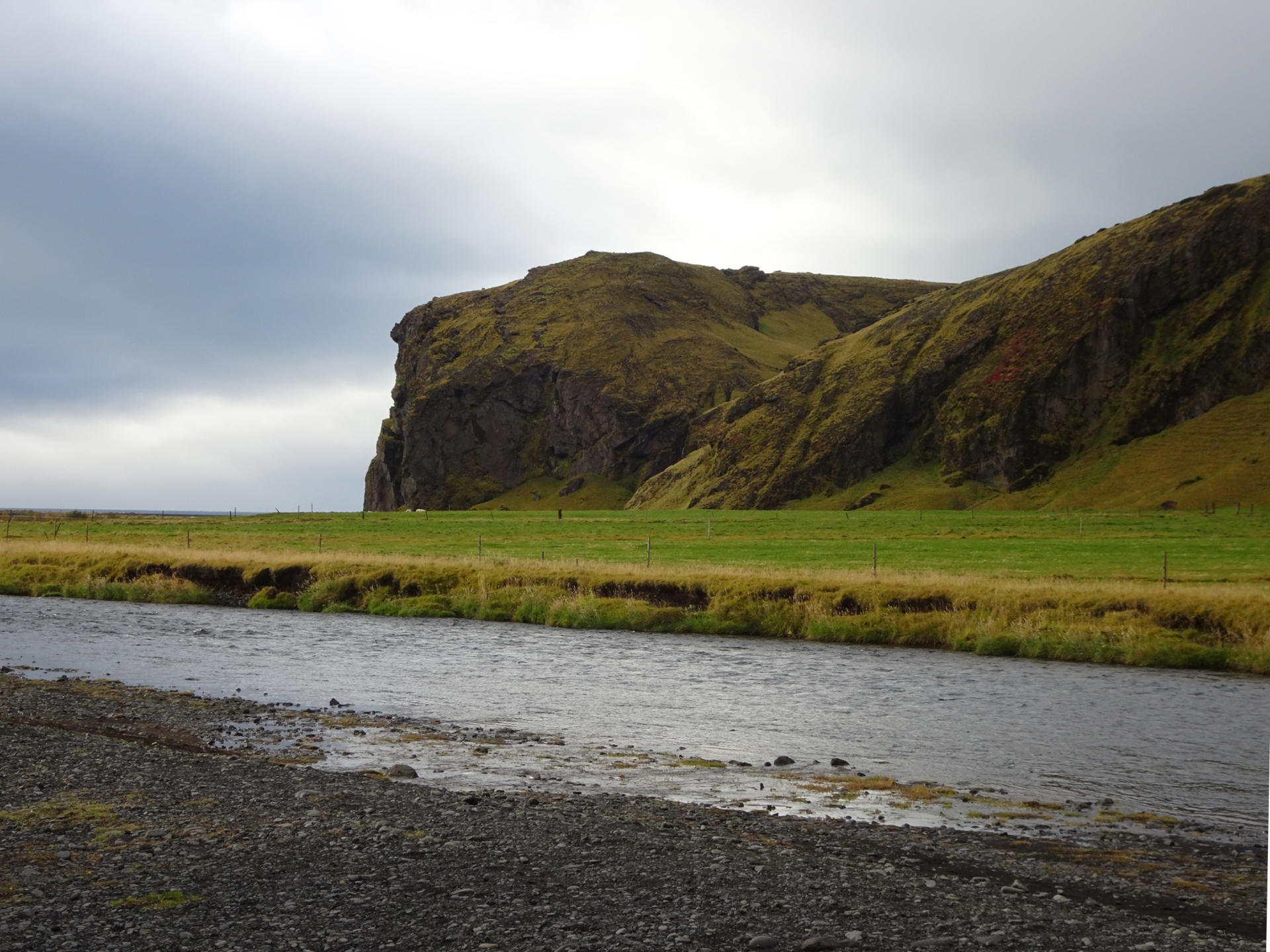
After wandering around Skógafoss we wandered around the Skogar Folk Museum for a while. Split into three elements, the Folk, the Open Air and Technical museums each covered different parts of the local area’s history.
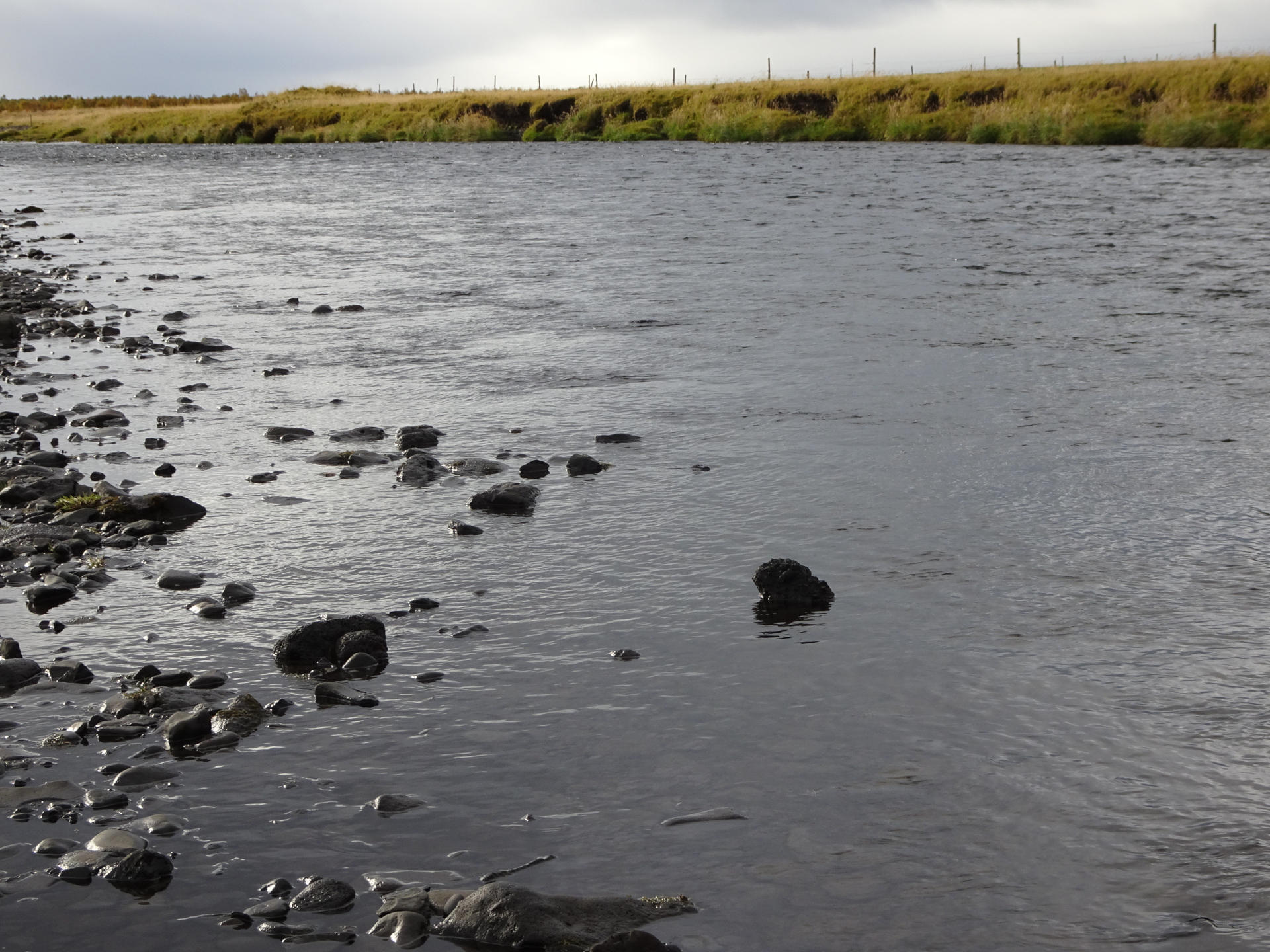
The folk museum was full of really cool old stuff, lots of farm implements and historical artifacts along with examples of art and culture going back to the earliest days of the area’s settlement. Unfortunately much of it was under glass in ways that precluded good photos being taken :(
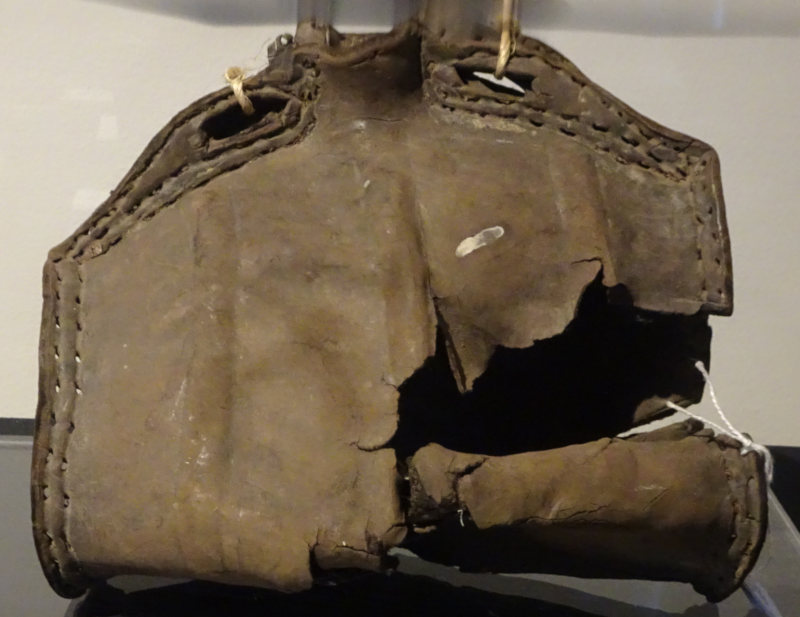 This leather bottle was an undated find from the Myrdaur region in 1966.
This leather bottle was an undated find from the Myrdaur region in 1966.
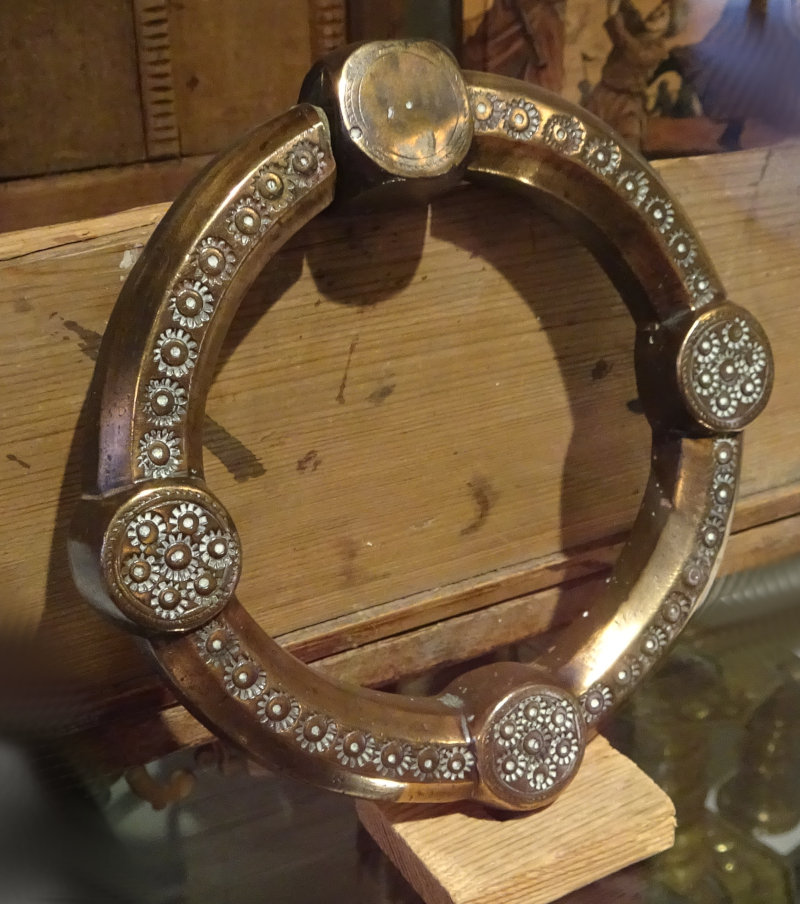
This was thought to be the ring of the legendary chest of gold hidden under Skogafoss.
A legend tells of a man named Thrasi Thórólfsson, the first settler at Skógar who hid a chest full of gold underneath the waterfall. Repeated glimpses of the chest eventually enticed three men to make an attempt to retrieve the chest from the water. The men managed to get ahold of one of the handles, but as they tried to drag the chest to land, the ring broke off and the chest disappeared once again under the falls, putting an end to their efforts. It is said that the ring once served as a handle on the church door at Skógar Church and can be seen today on the entrance door at Skógar Folk Museum. When the sun shines on Skógafoss you can still see a glimmer of gold appearing In the waterfall.
As someone fascinated with the ingenuity of people, this rope winder was wonderful in its simplicity.
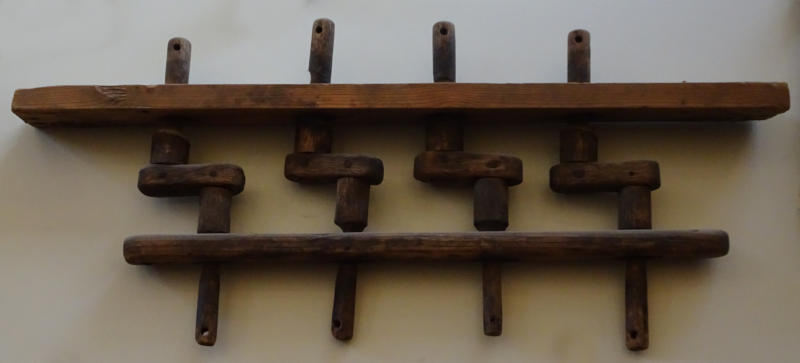
Various Pieces
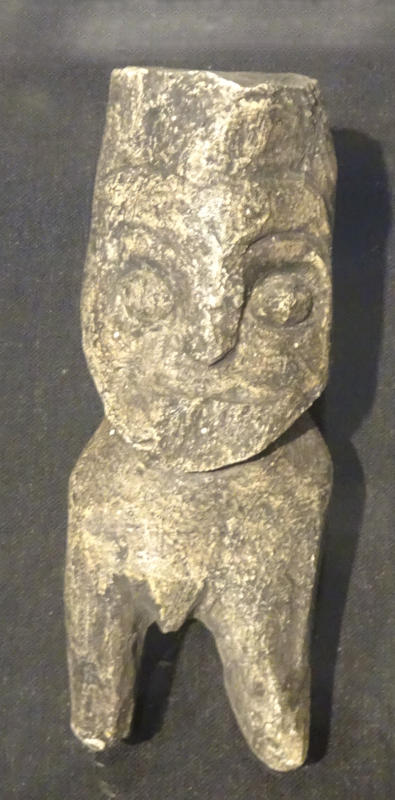
The bedboards are cool, part of the structure of the bed but also regularly a place for people to express themselves in intricate carvings.
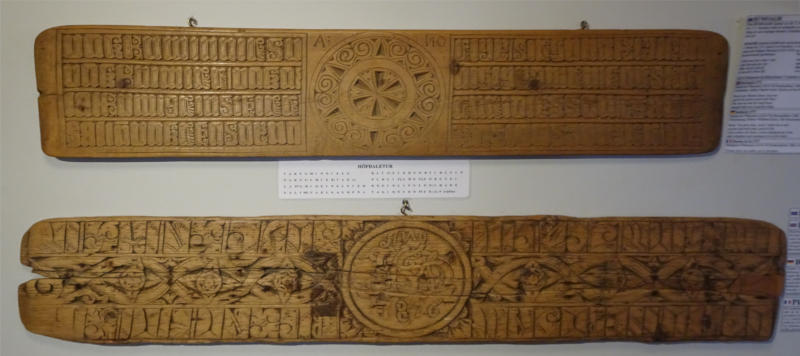
Fishing accoutrement…
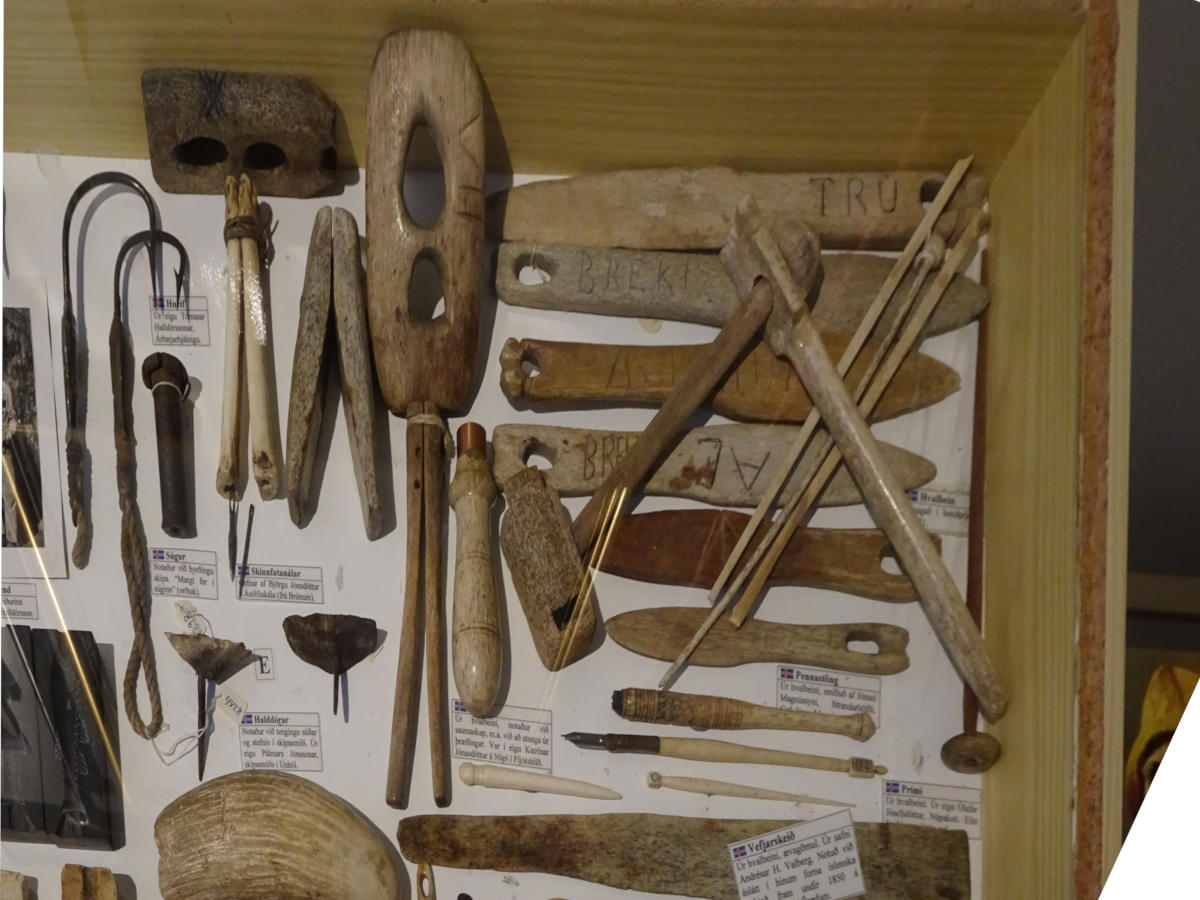
When you hunt whale, you end up with a lot of vertebrae lying around - this one was hollowed out and used as a storage cask.
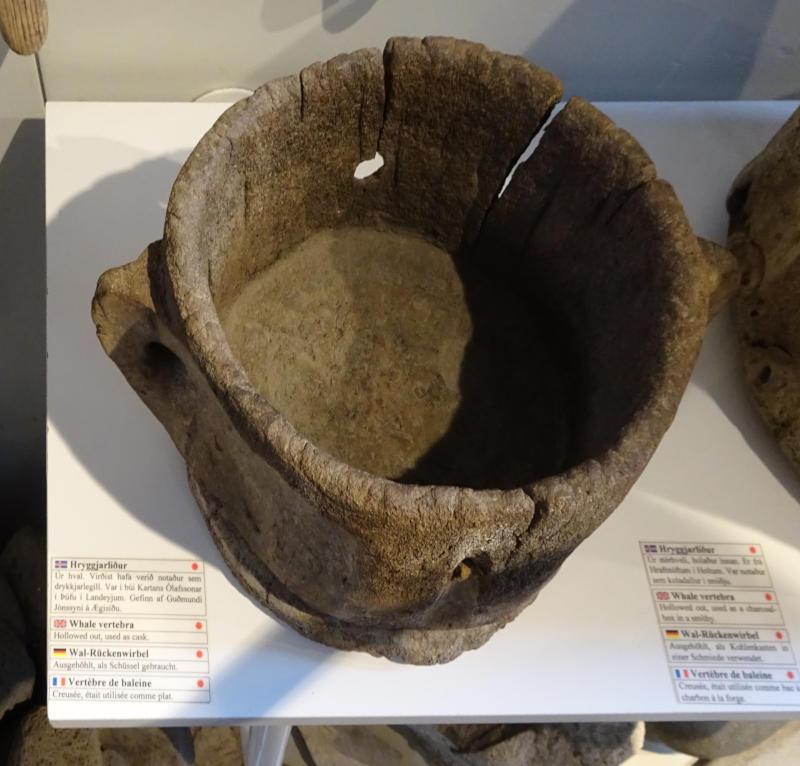
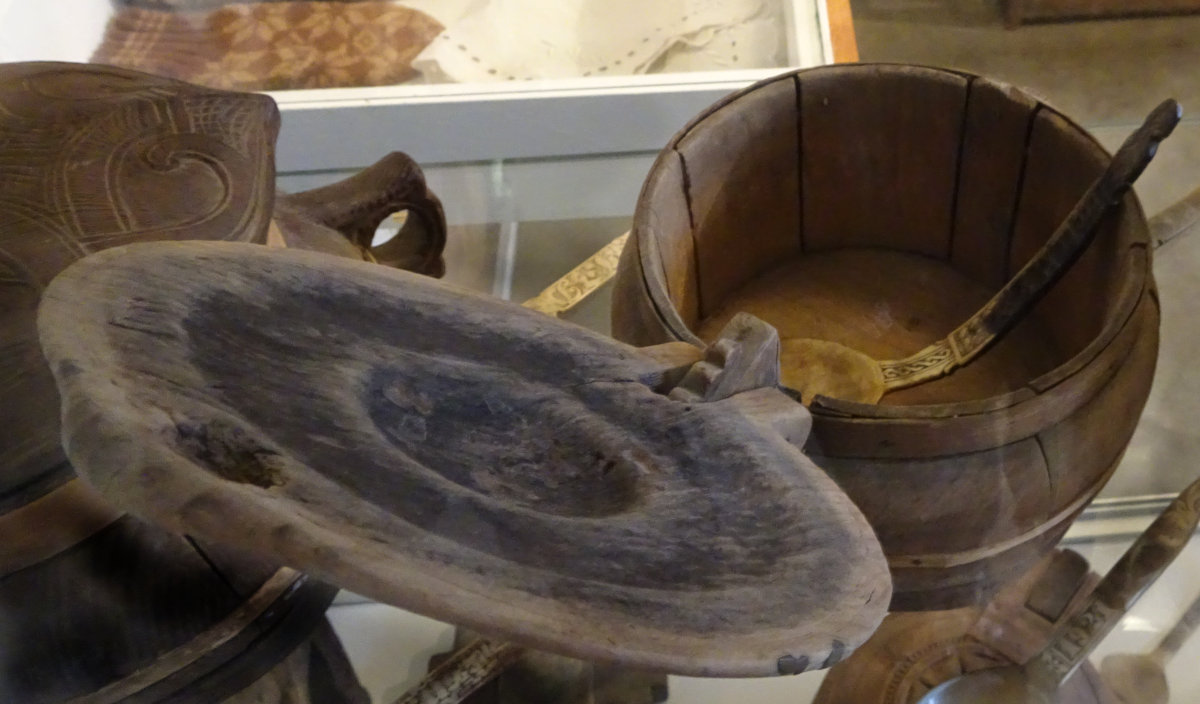
Askur were a lidded eating bowl made from staves of driftwood with a carved wooden lid. They were the usual eating vessel until the late 19th century, finally being replaced by plates. The bowl would be for porridge or soups, the lid bread and meat. People would sit on their beds and eat with a horn spoon and pocket knife. Everyone would have their very own eating implements.
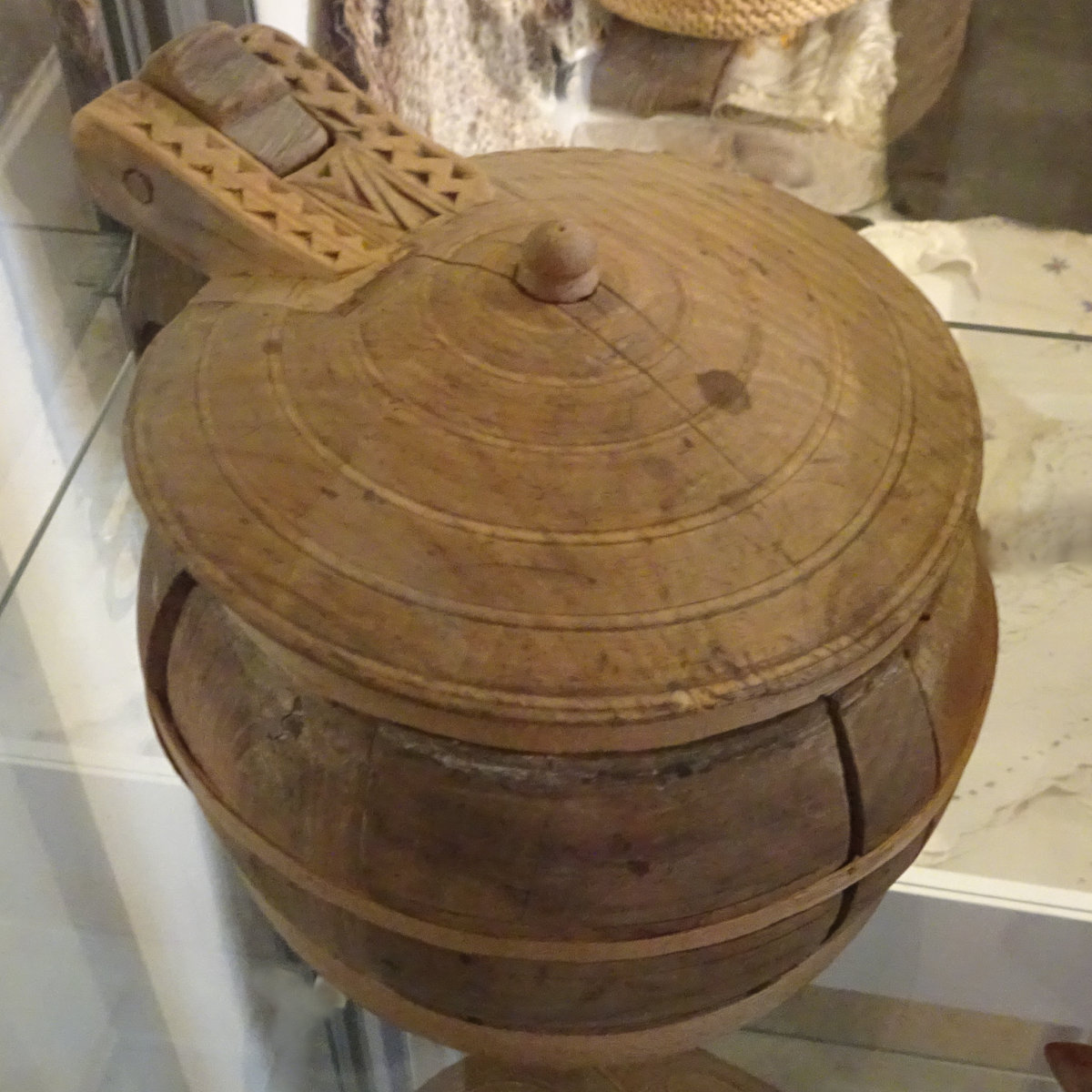
From a reenactment perspective I’m really interested to find out more about these items as they seem really neat and functional while being something I can actually make myself!
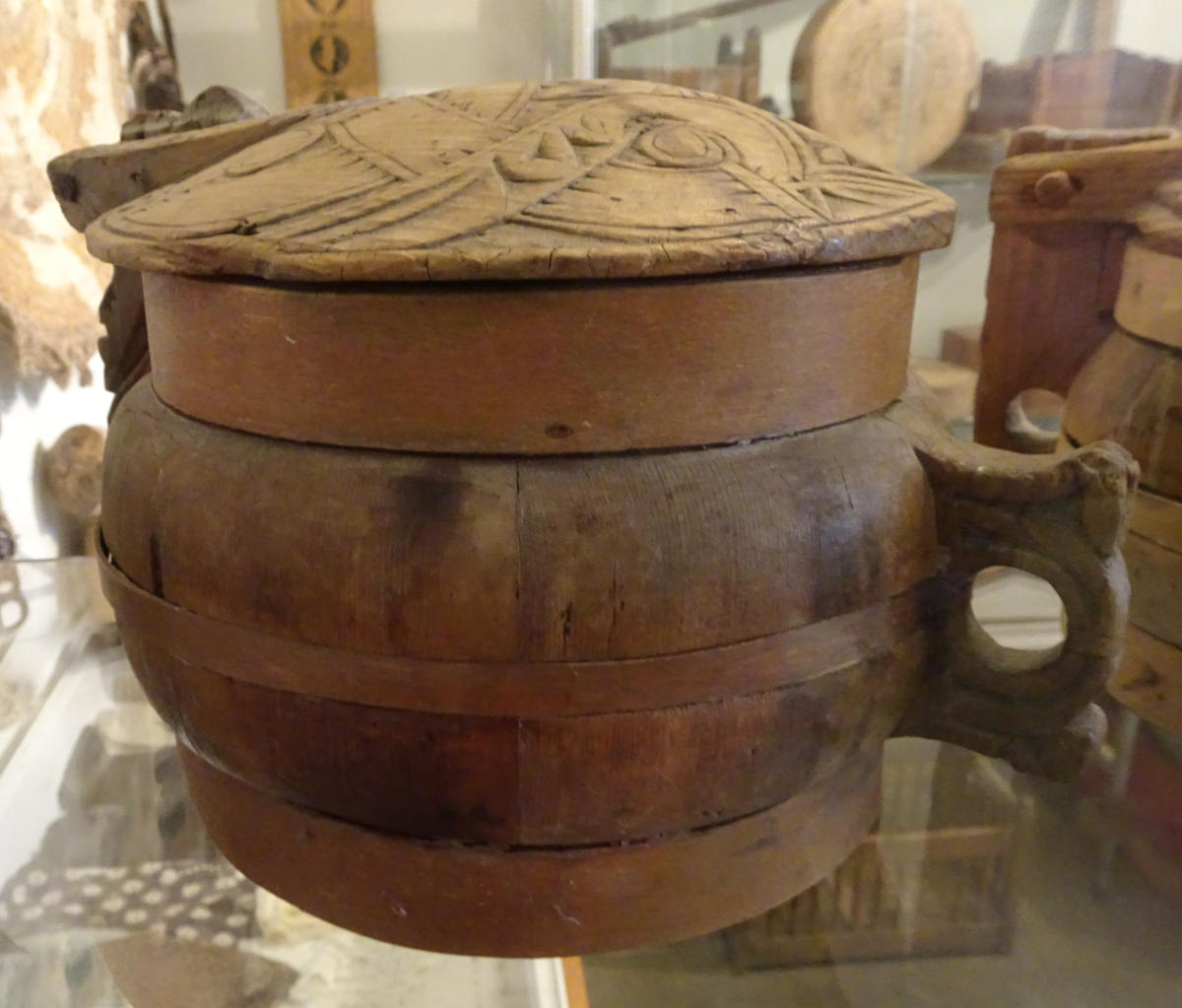
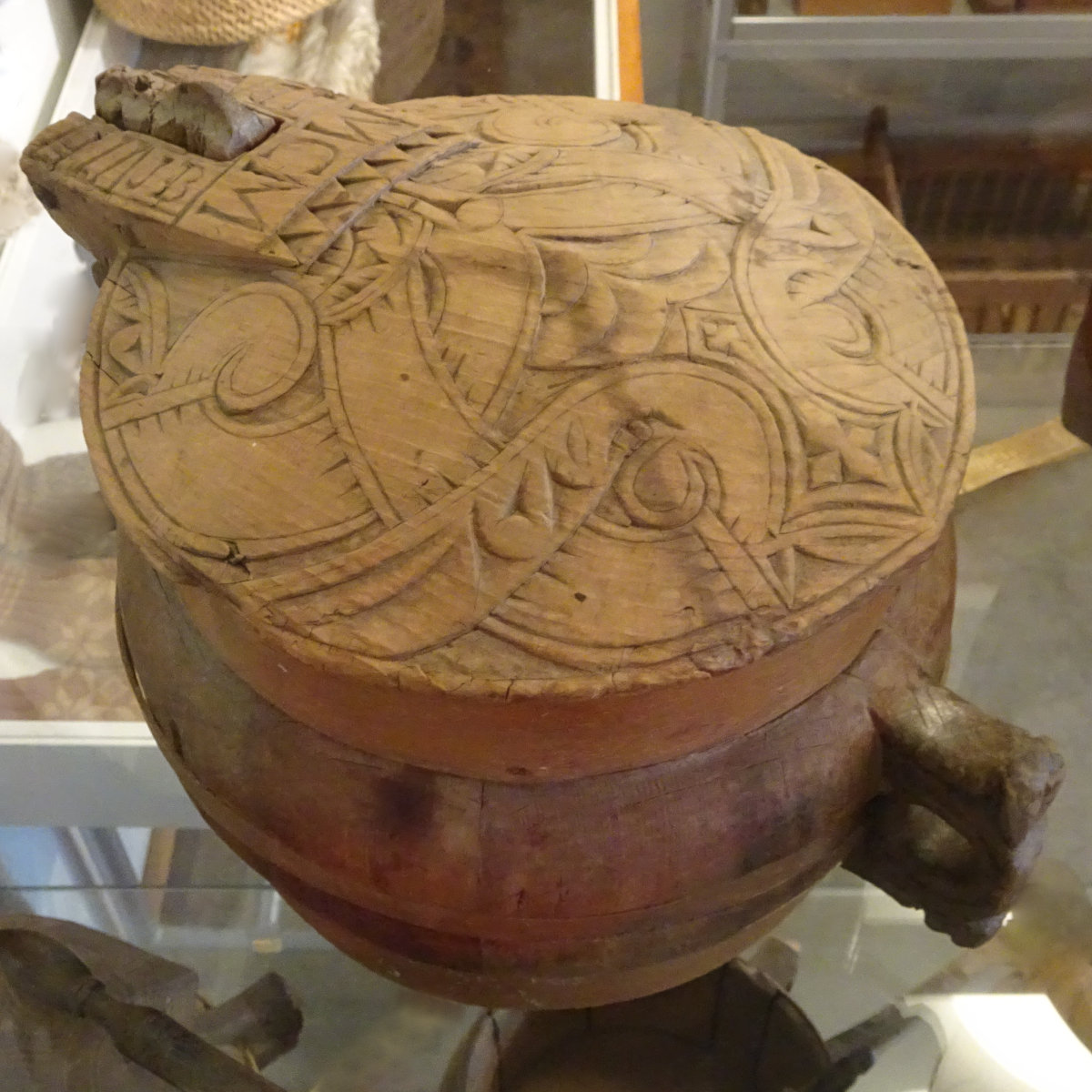
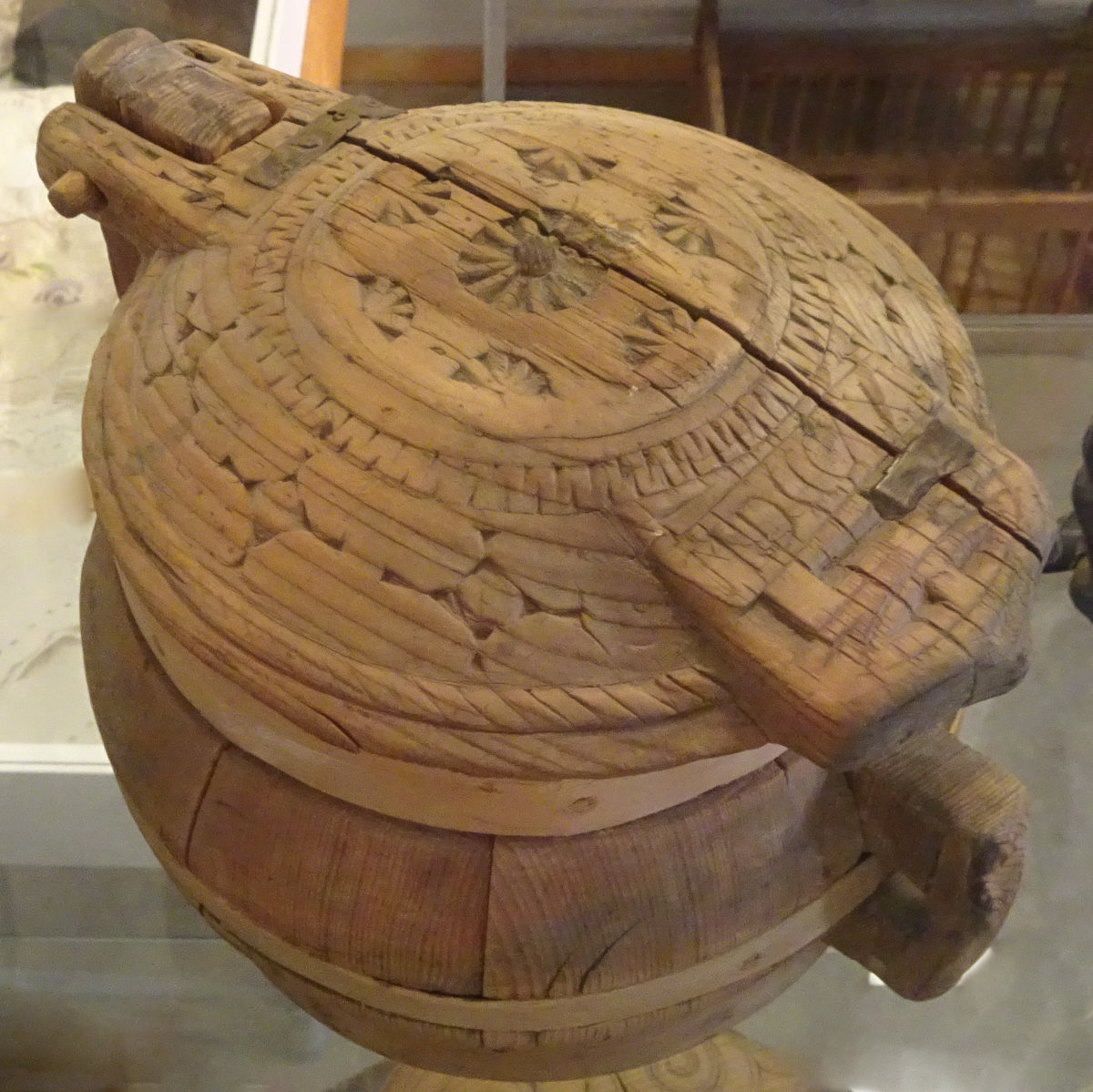
It was really hard to get good photos of them due to the super-reflective glass and tight quarters :(
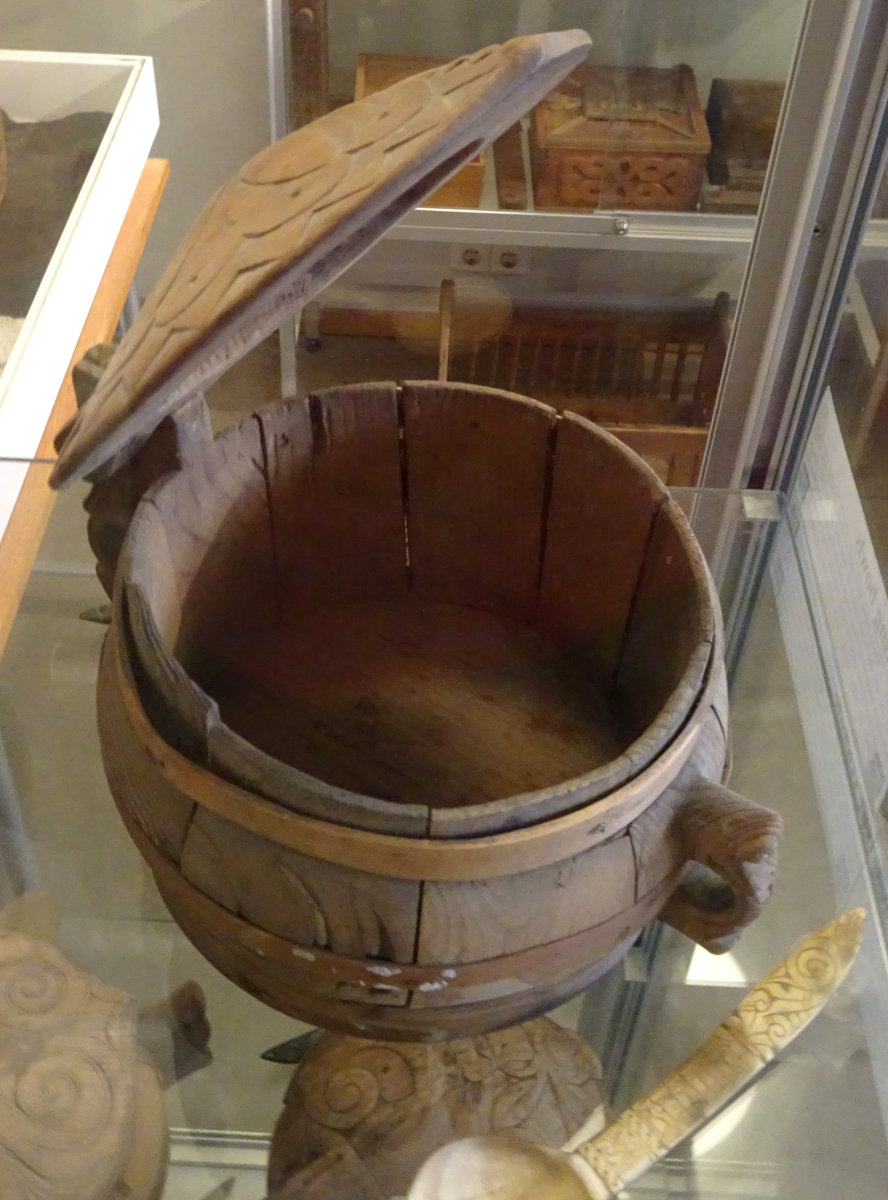
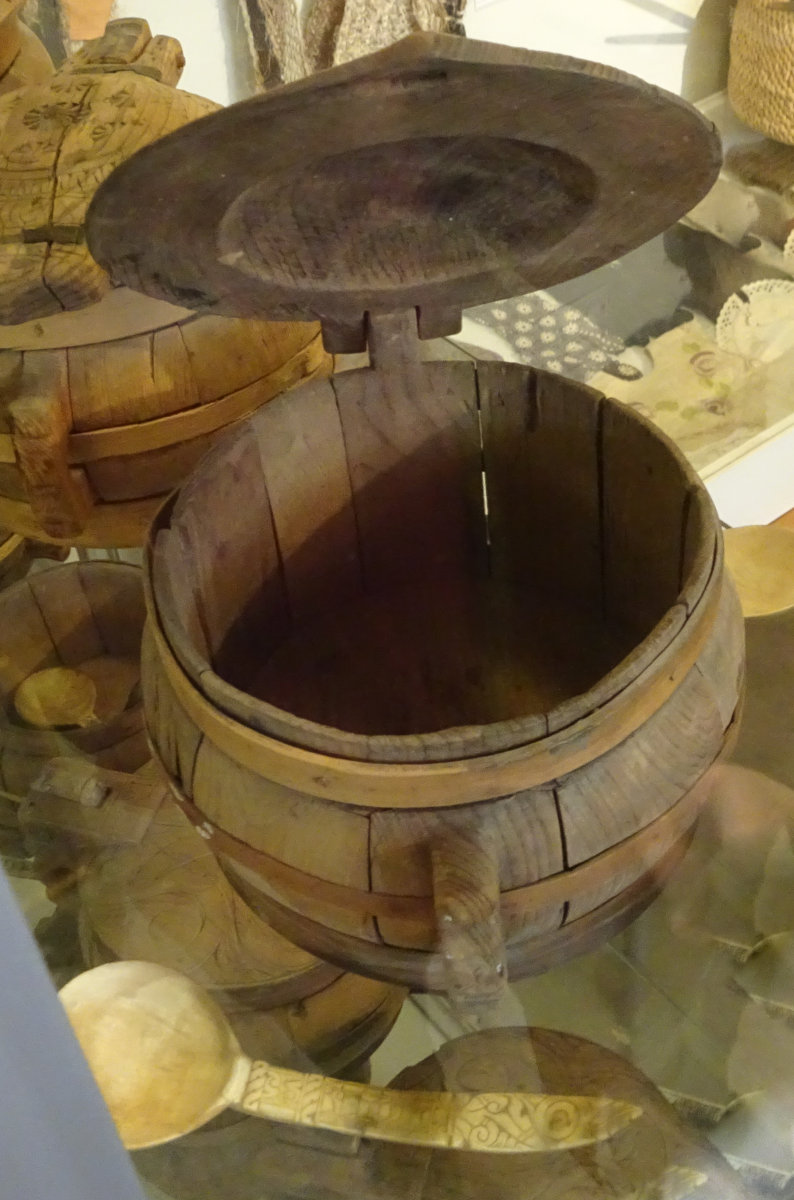
Downstairs was a collection of biological curiosities, stuffed birds and animals, skeletons, eggs, plants etc., which was the private collection of Andrés H. Valberg from Skagafjörður.
I’m guessing this is the sheep farming equivalent of a bug in the code…?
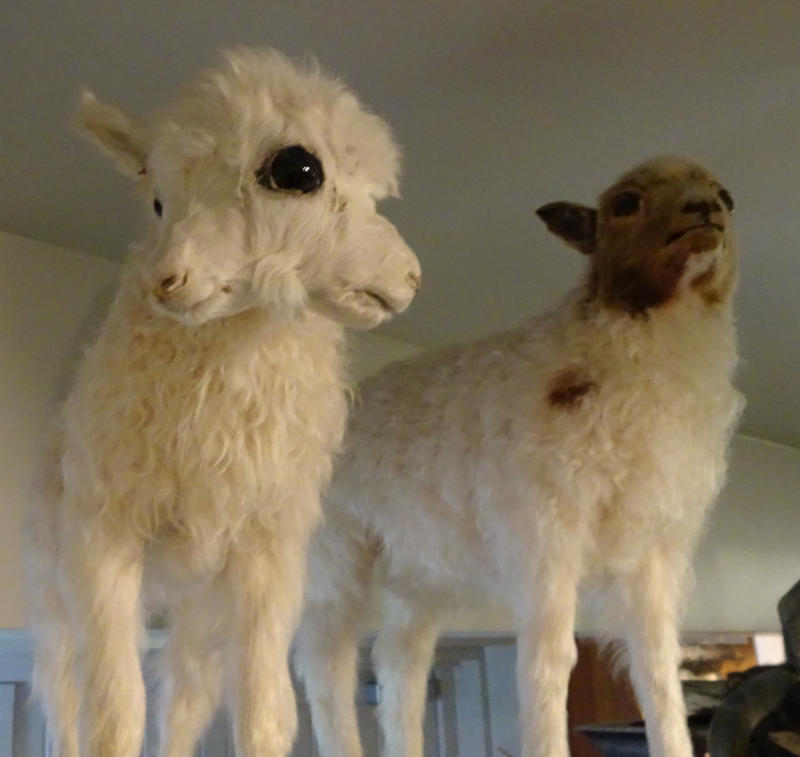
Hidden up in the loft was a pretty spectacular collection of wool processing equipment, from spinning wheels to looms and things I can’t even name!
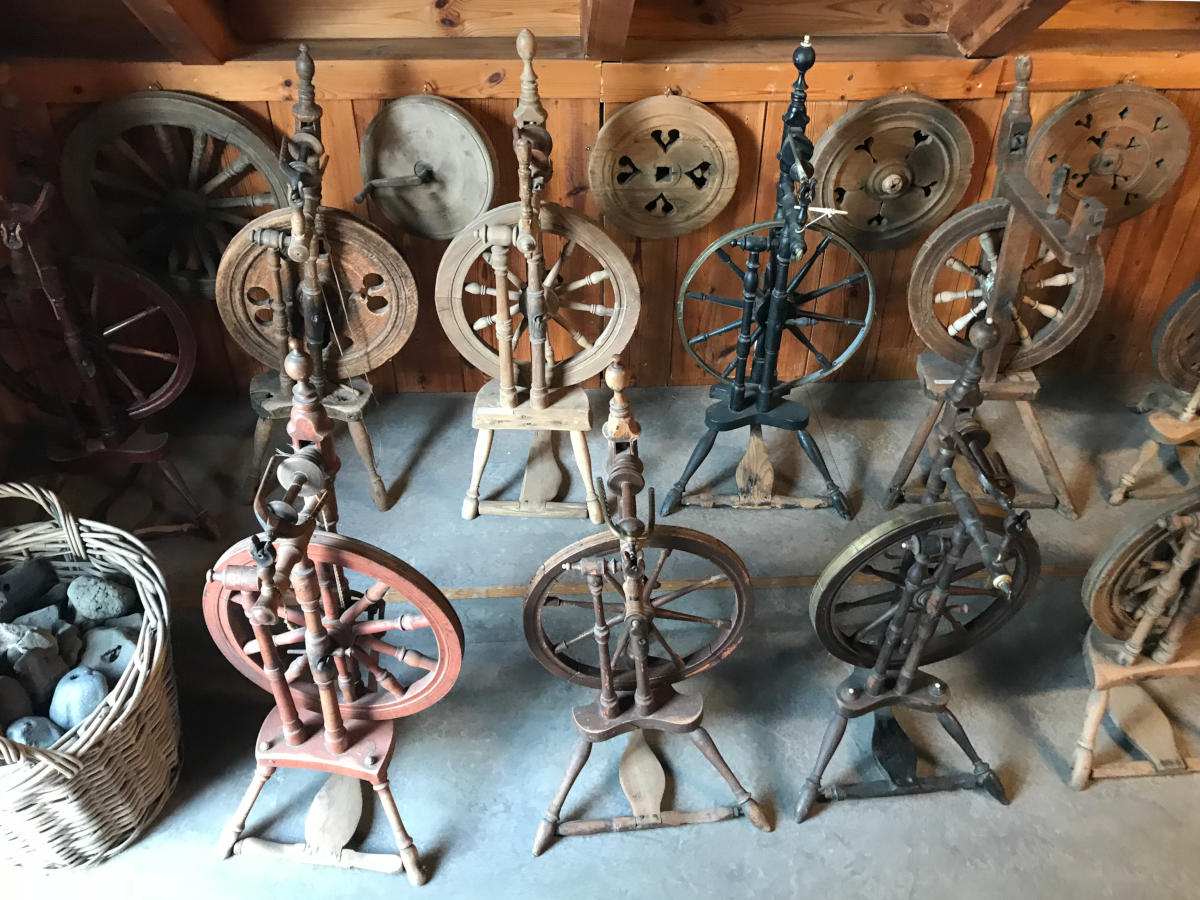
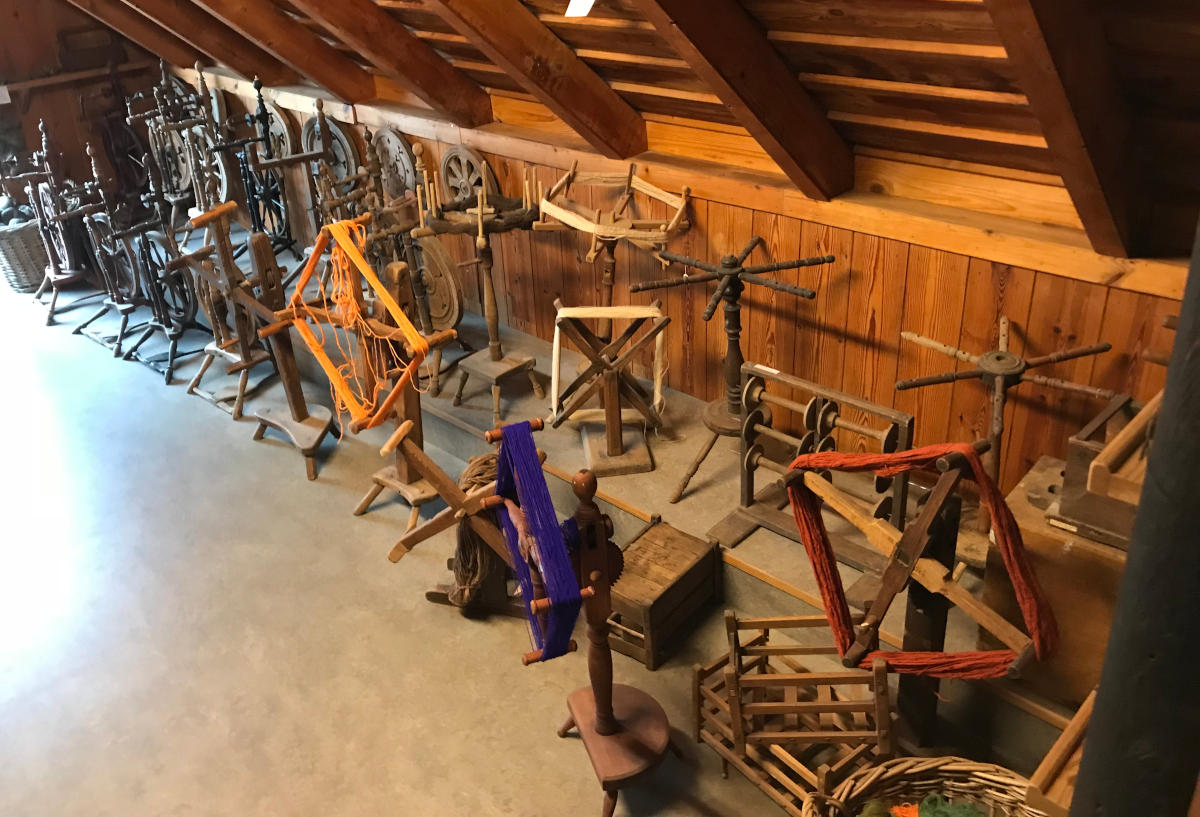
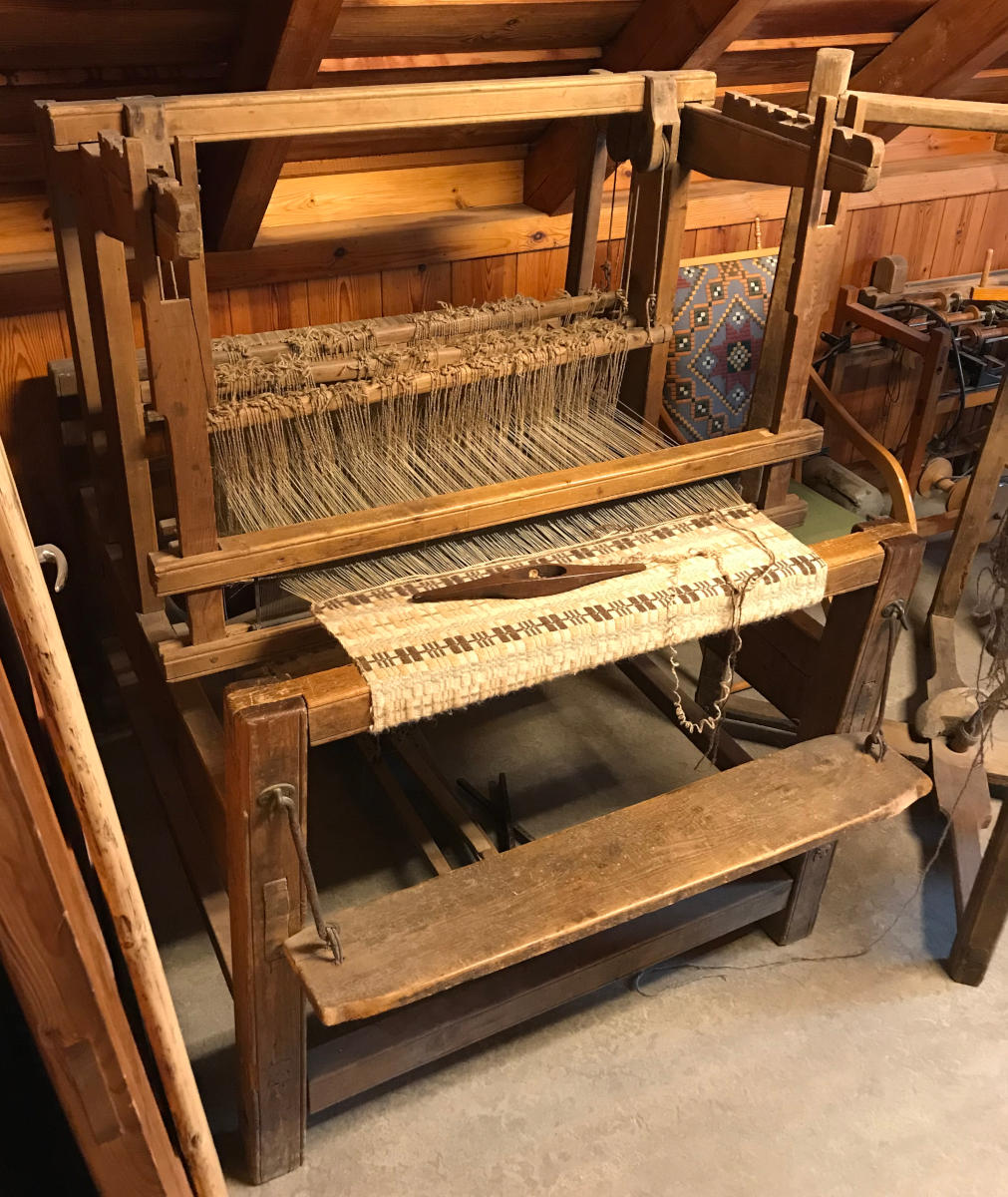
Outside (unsurprisingly) was the open air museum. There were some original structures on site along with others brought to the location once they’d outlived their usefulness where they were.
This is the “House of Holt”, the first timber house built in the Vestur-Skaftafells-sysla, entirely of driftwood around 1878. Some of the interior panels were from a wrecked hospital ship in 1899. It still looked like a lovely building to live in, even after all this time.
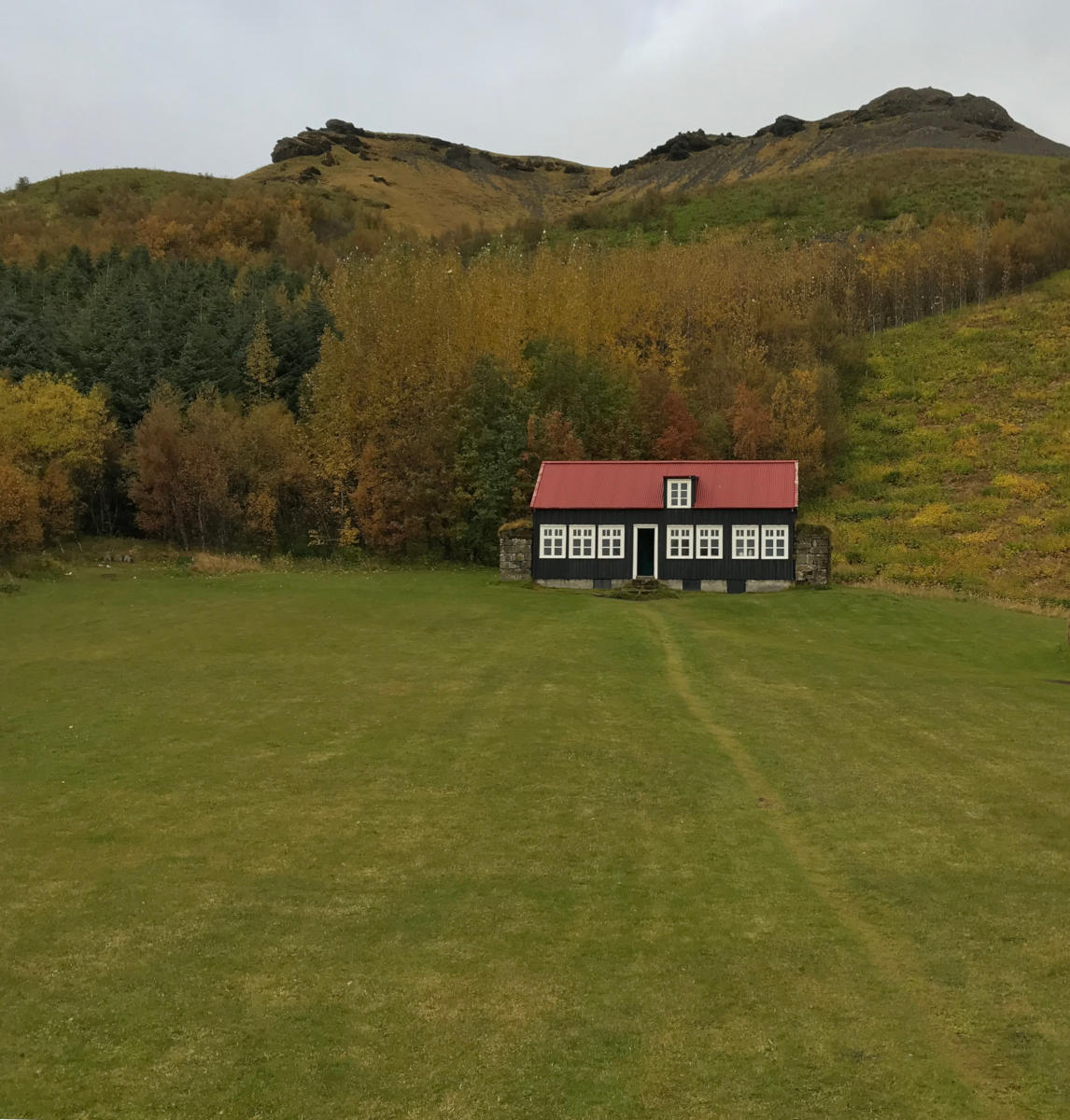
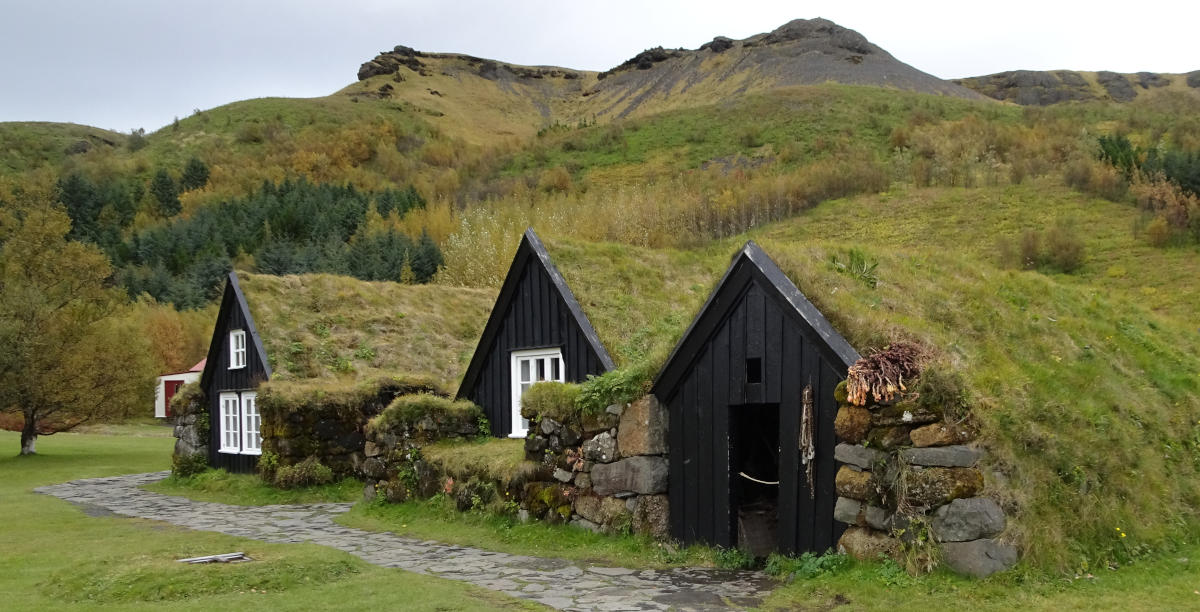
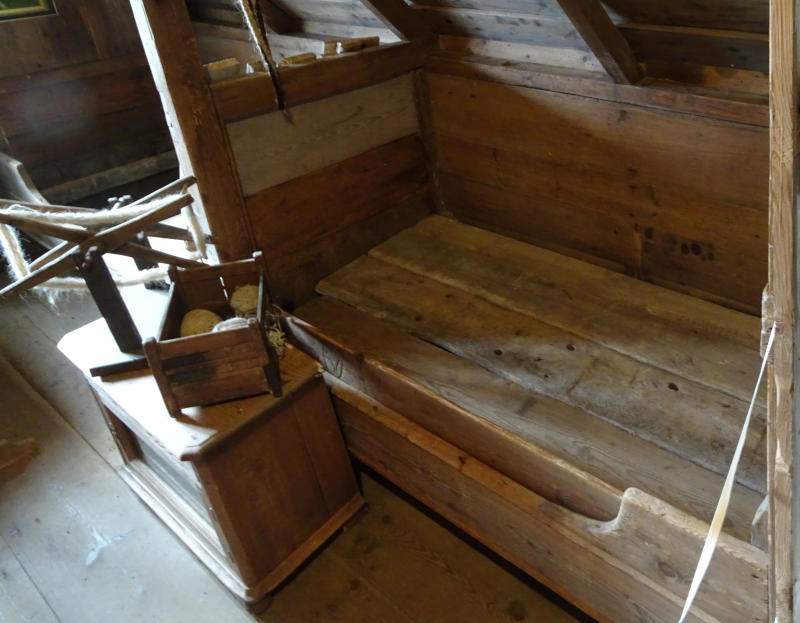
These were a community of diminutive souls, huddled together for warmth, that’s for sure. I really like the sideboards which kept the little ones in the bed and allowed for people to show their personality and identity.
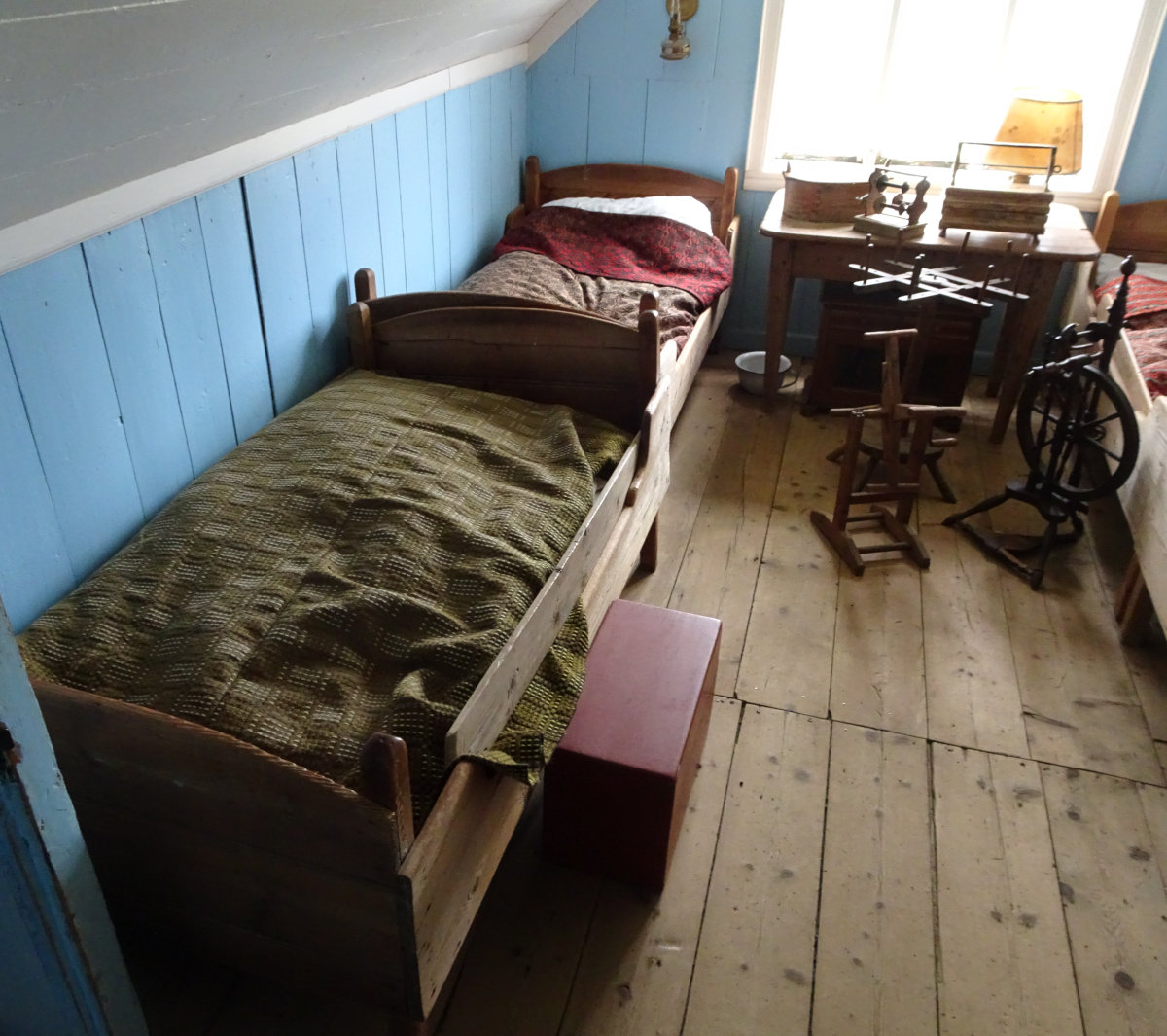
The transport and communications museum was strange and neat. I tore through the place and didn’t really take any photos, but it had a lot of great little displays of the history of Iceland. The country has a lot of mobile tech in its past due to the remoteness of their people and the regular activities of their rescue organisations.
Iceland was the first country in the world where DTMF and pulse dialling could work interchangably on the one exchange, according to one of the presentations. That’s quite the random fact.
Dyrholaey (Icelandic for door hill island) Lighthouse . What an amazing view, and wow … SO WINDY! It felt like we were going to get knocked flat at any time we weren’t holding onto something - or knocked off the rocks if we went near an edge.
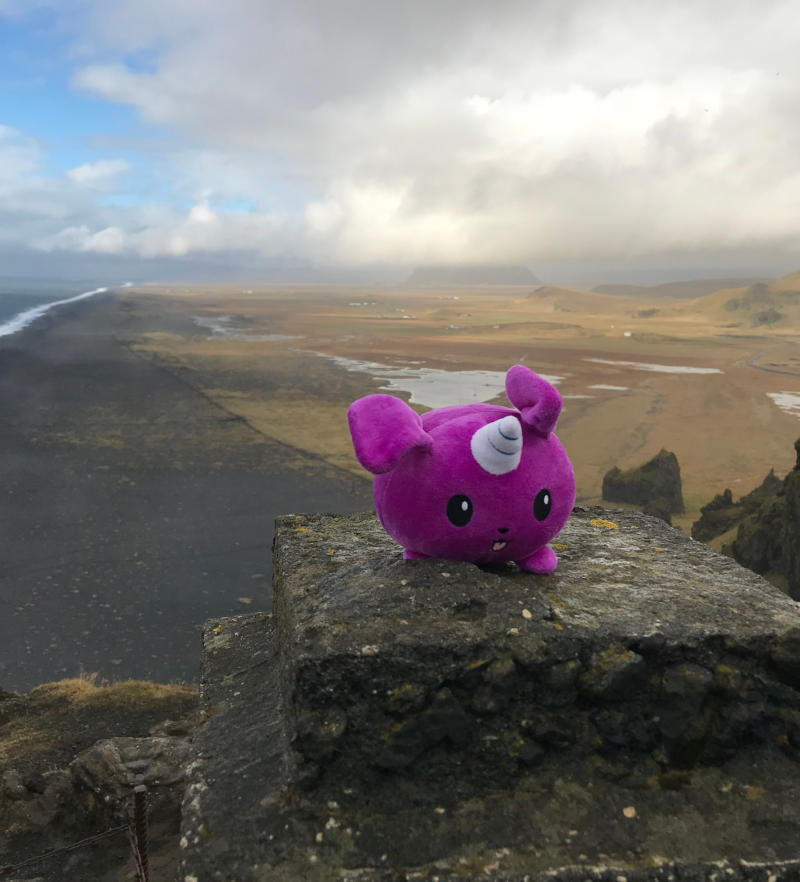 The puppycorn trying to fly, seconds after this it came flying towards me!
The puppycorn trying to fly, seconds after this it came flying towards me!
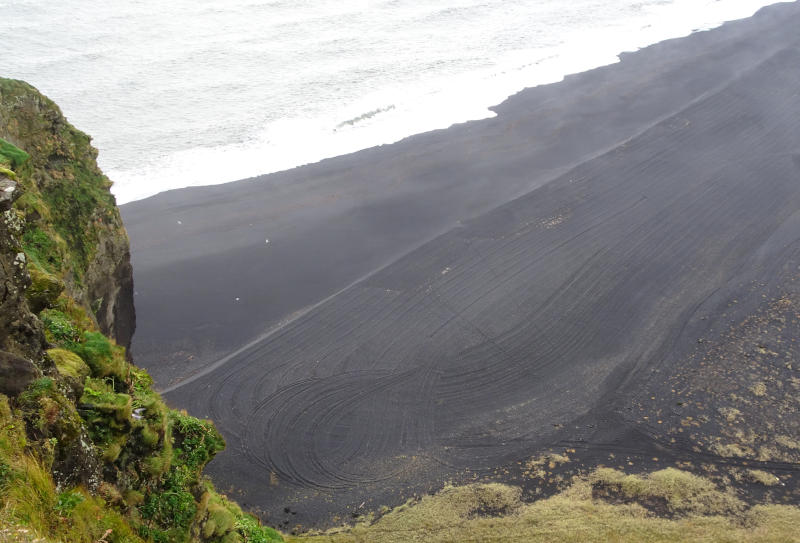 I’m not sure why they smooth the beach like this, maybe it’s so you can see where the tourists have been and dropped their keys?
I’m not sure why they smooth the beach like this, maybe it’s so you can see where the tourists have been and dropped their keys?
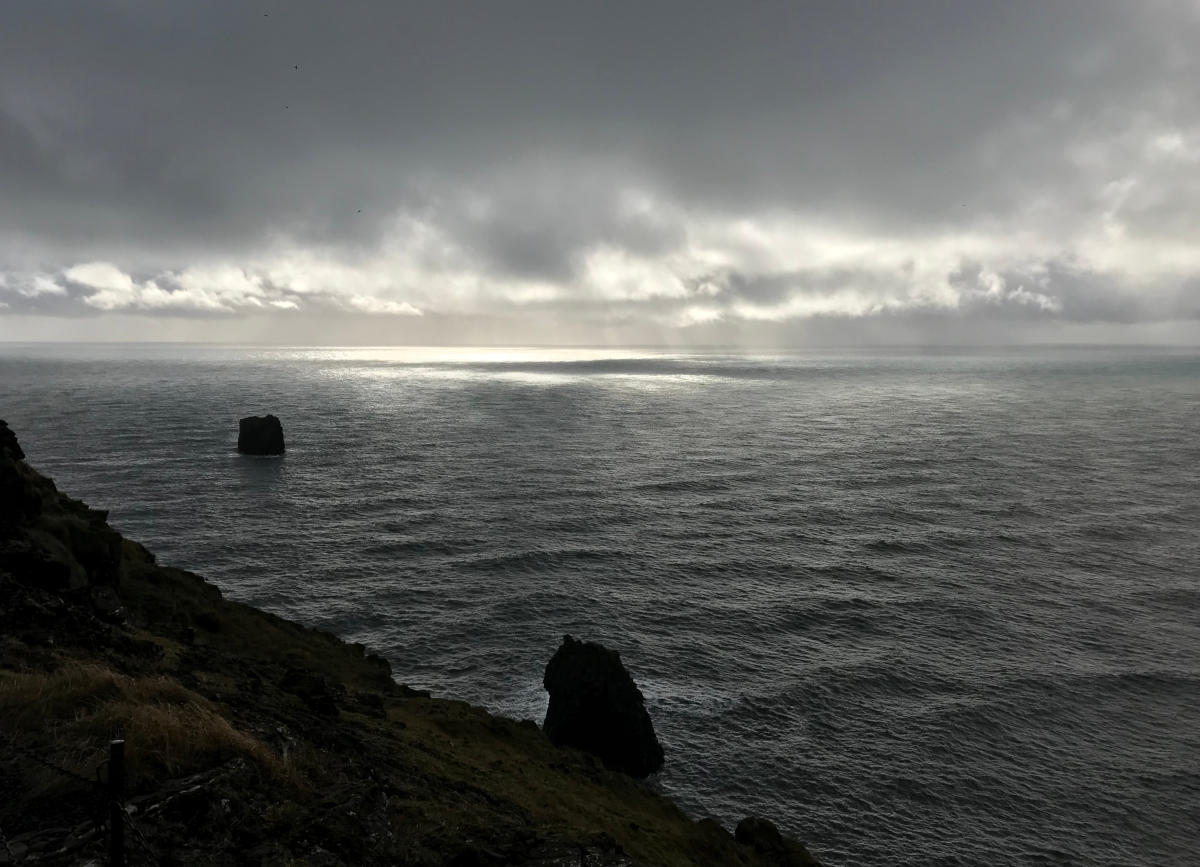 With the light being where it was, it was super easy to get a moody Icelandic sea shot.
With the light being where it was, it was super easy to get a moody Icelandic sea shot.
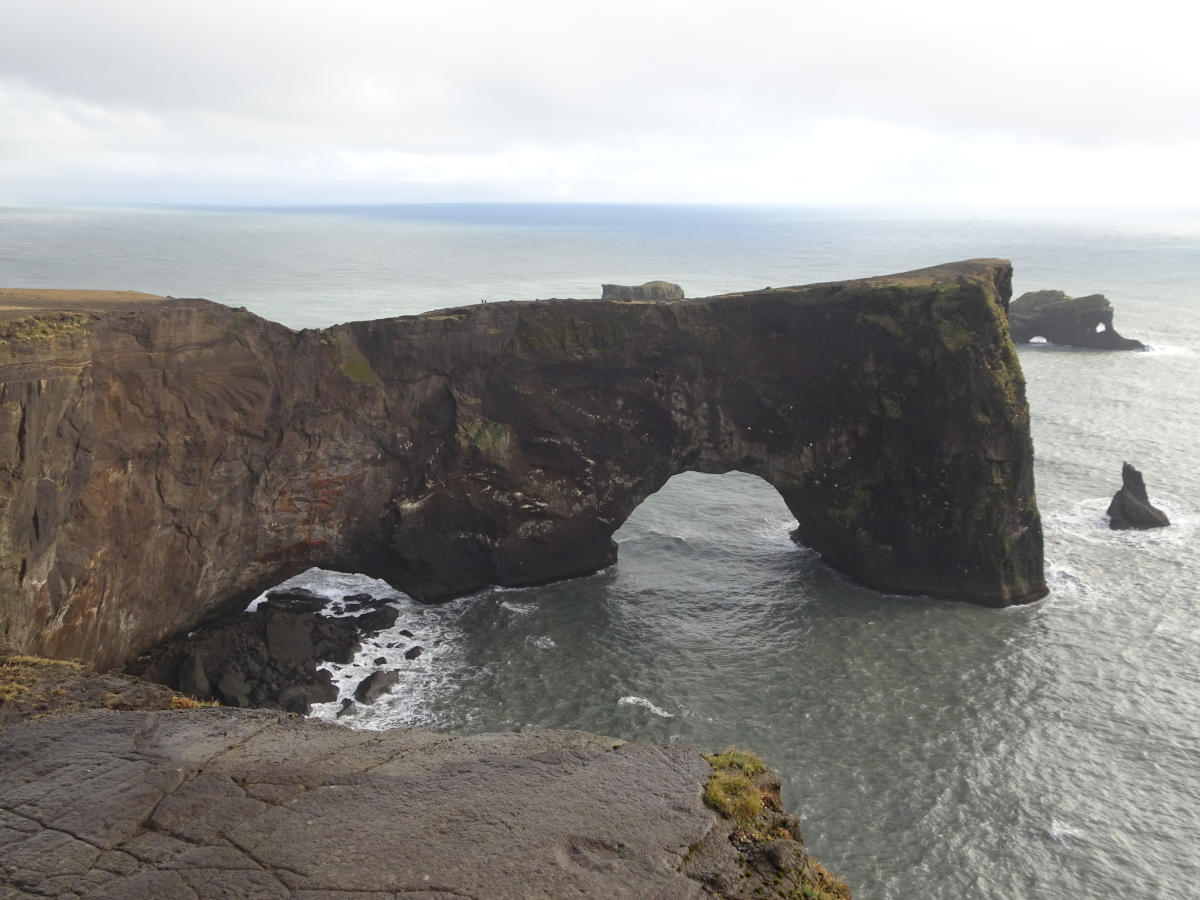 If we’d been here in the summertime, we’d had seen Puffins. Maybe next time?
If we’d been here in the summertime, we’d had seen Puffins. Maybe next time?
This was the view from the lighthouse to the basalt columns of Reynisdrangar, our next stop.
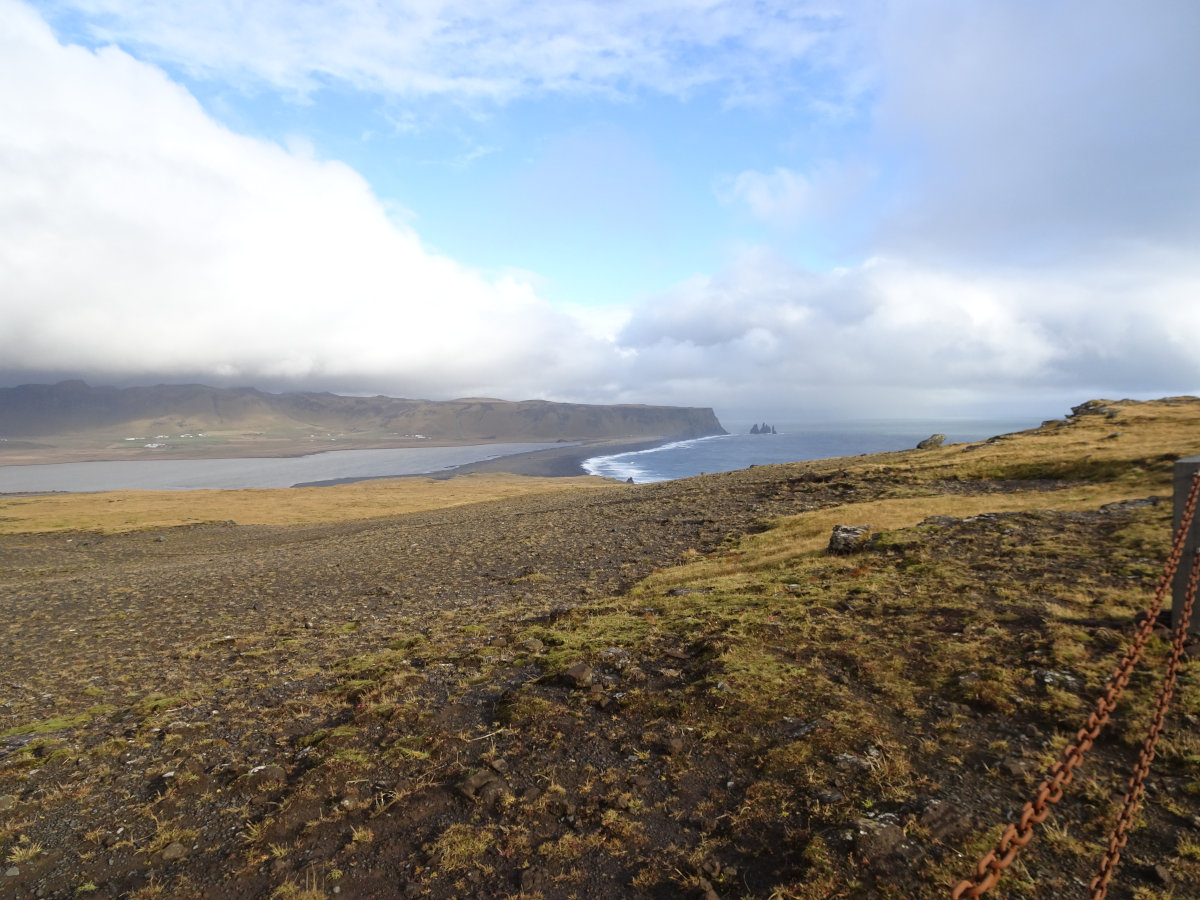
Reynisdrangar Lookout, a hill full of basalt columns that look like something manmade, but are spectacularly beautiful.
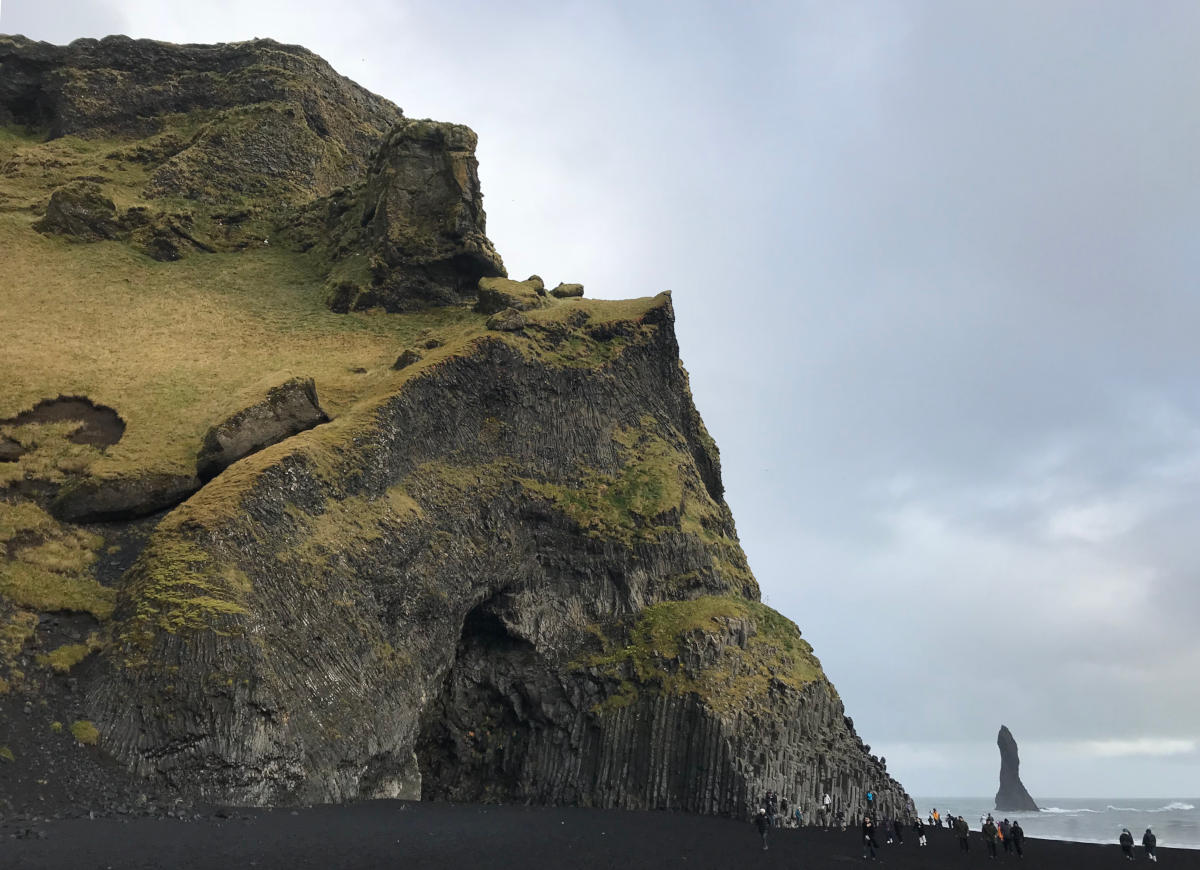
The beach is pretty treacherous here - there’s a fairly steep angle to the beach and the waves seem to surprise the tourists a bit. There was more than one sign telling the story of people who’d recently died by being dragged off the beach.
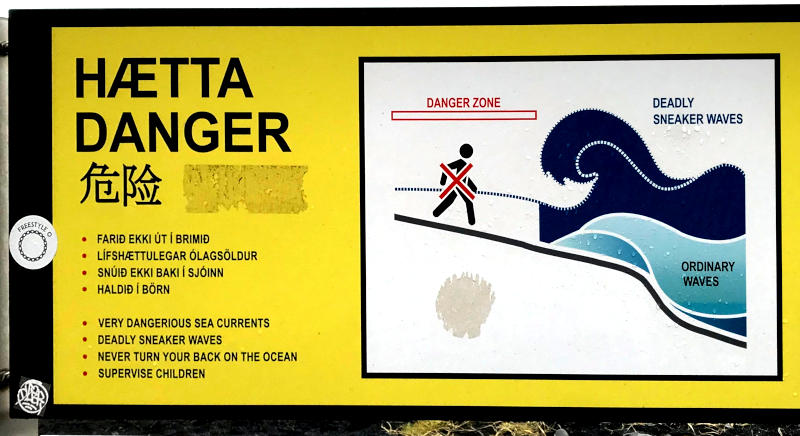
Our accommodation for the night was at Hunkbakkar Guesthouse, where the restaurant basically says “eat our sheep, they’re fresh!” amongst other local delicacies.
The wifi sucked, because the router was overloaded due to running extra services and messiness. I helped a little.
The guesthouse was very cute, like an oversized (not by much) tree house with a double and a single bed, a bathroom, table and just enough room to swing a cat.
The food was above even Iceland-level costly. I quite enjoyed the plokkfiskur. RMB did not. By the sounds of it, the typical version has a lot more cheese and a lot less cost so it might be something to make at home during winter. ~$37AUD for some stew, a wilted salad and some lovely, but cold, rúgbrauð was a bit sad.